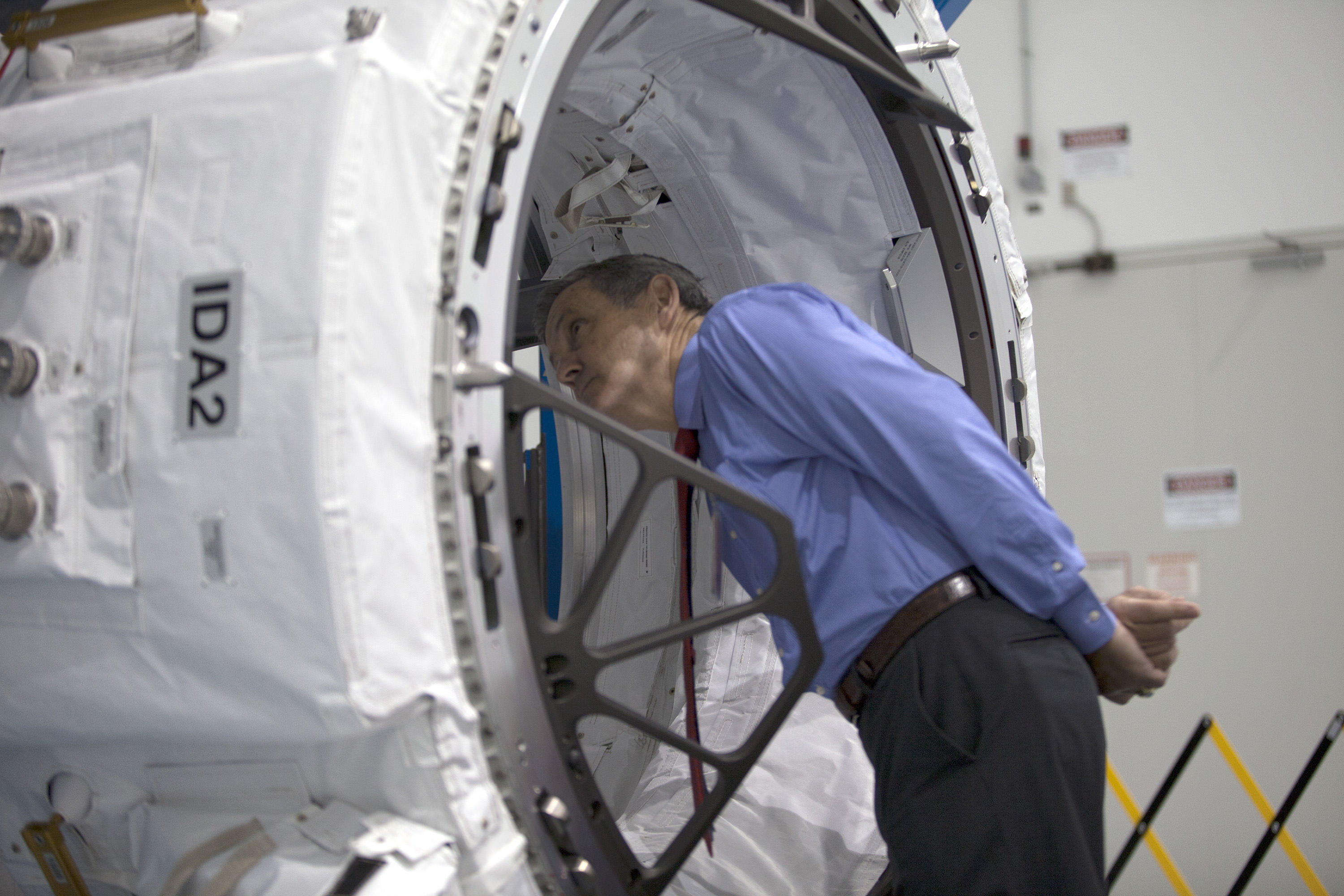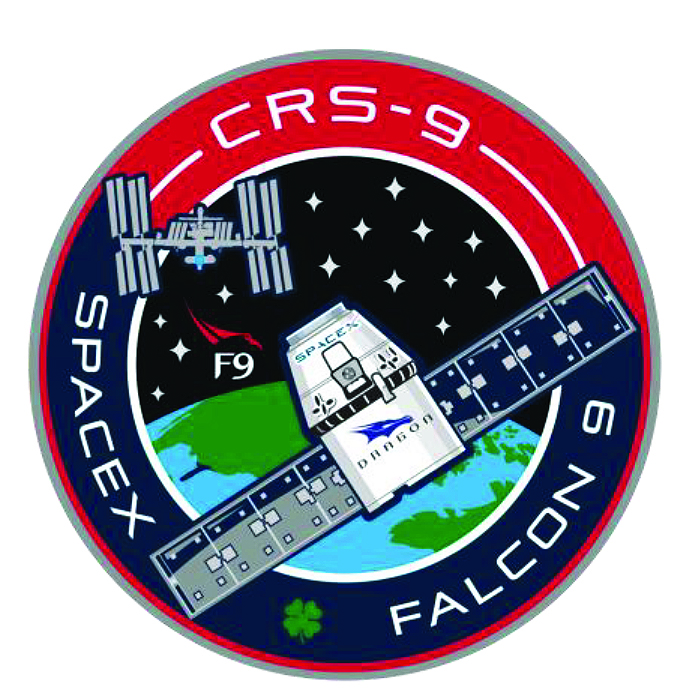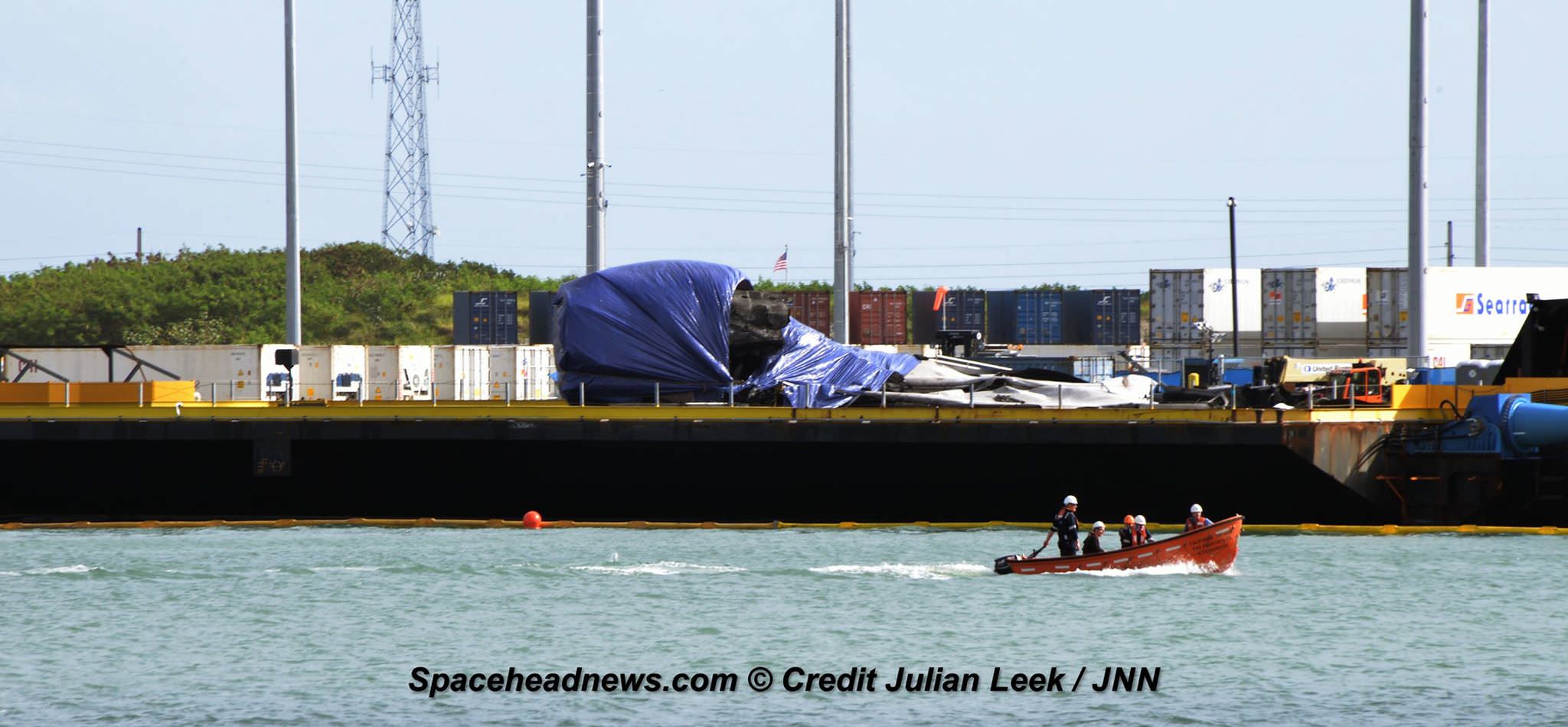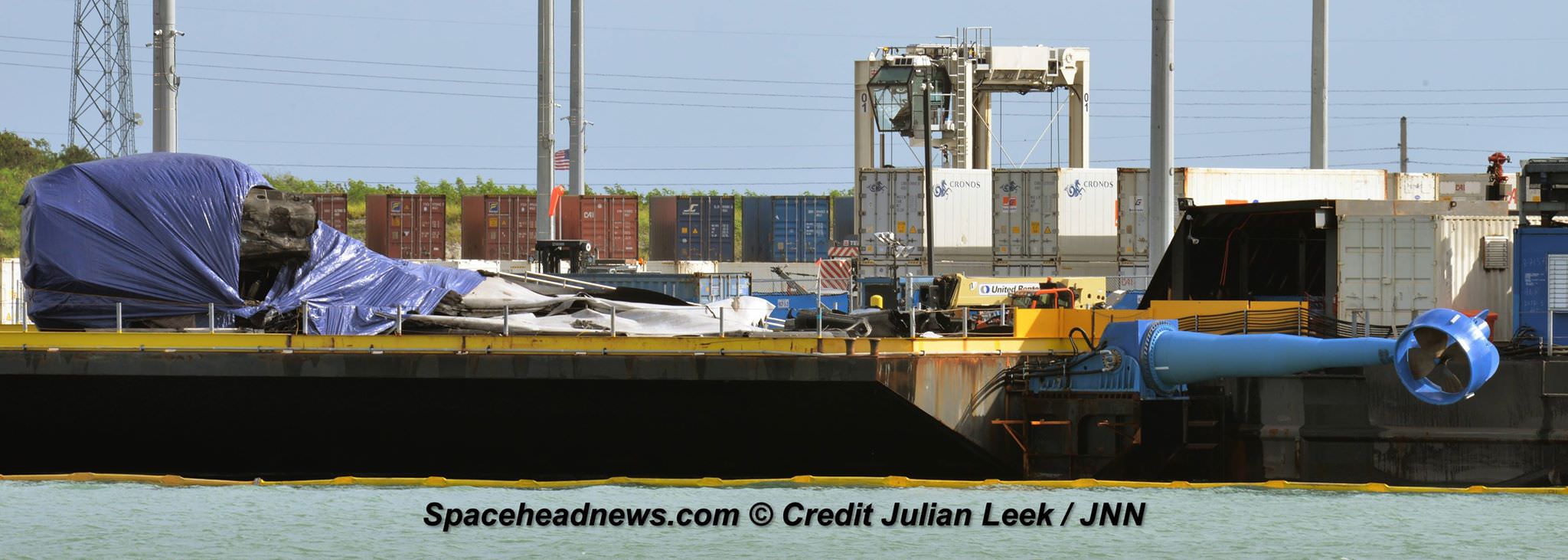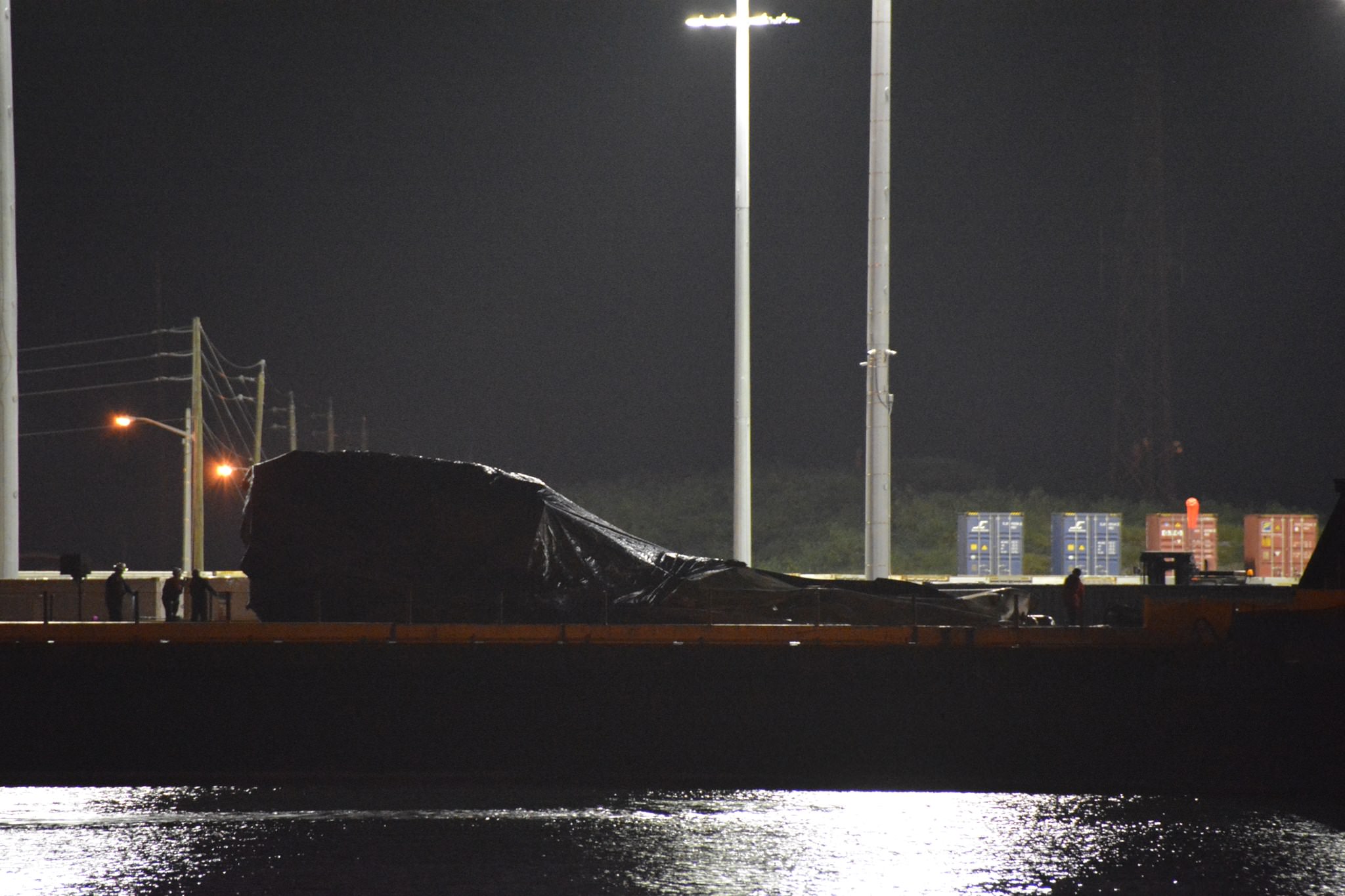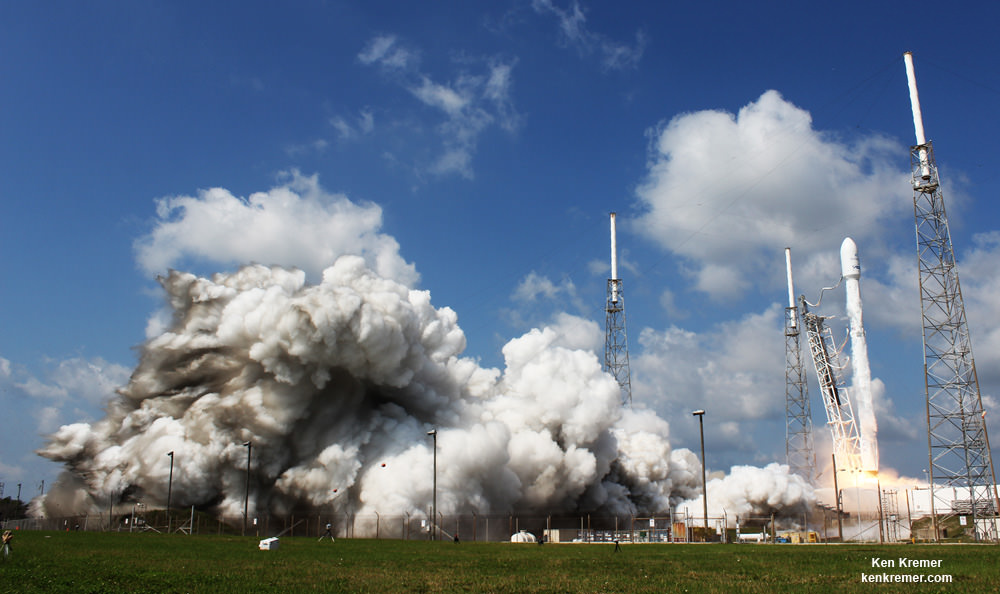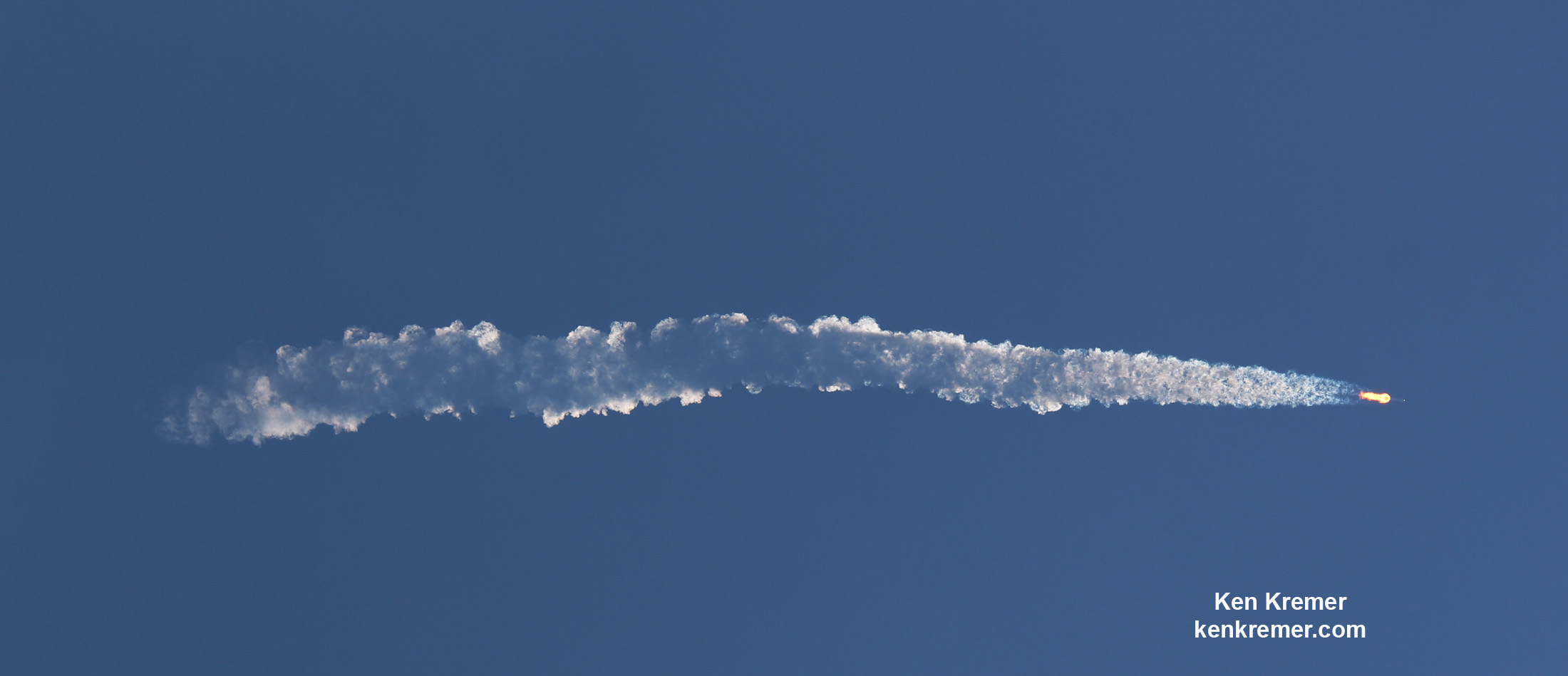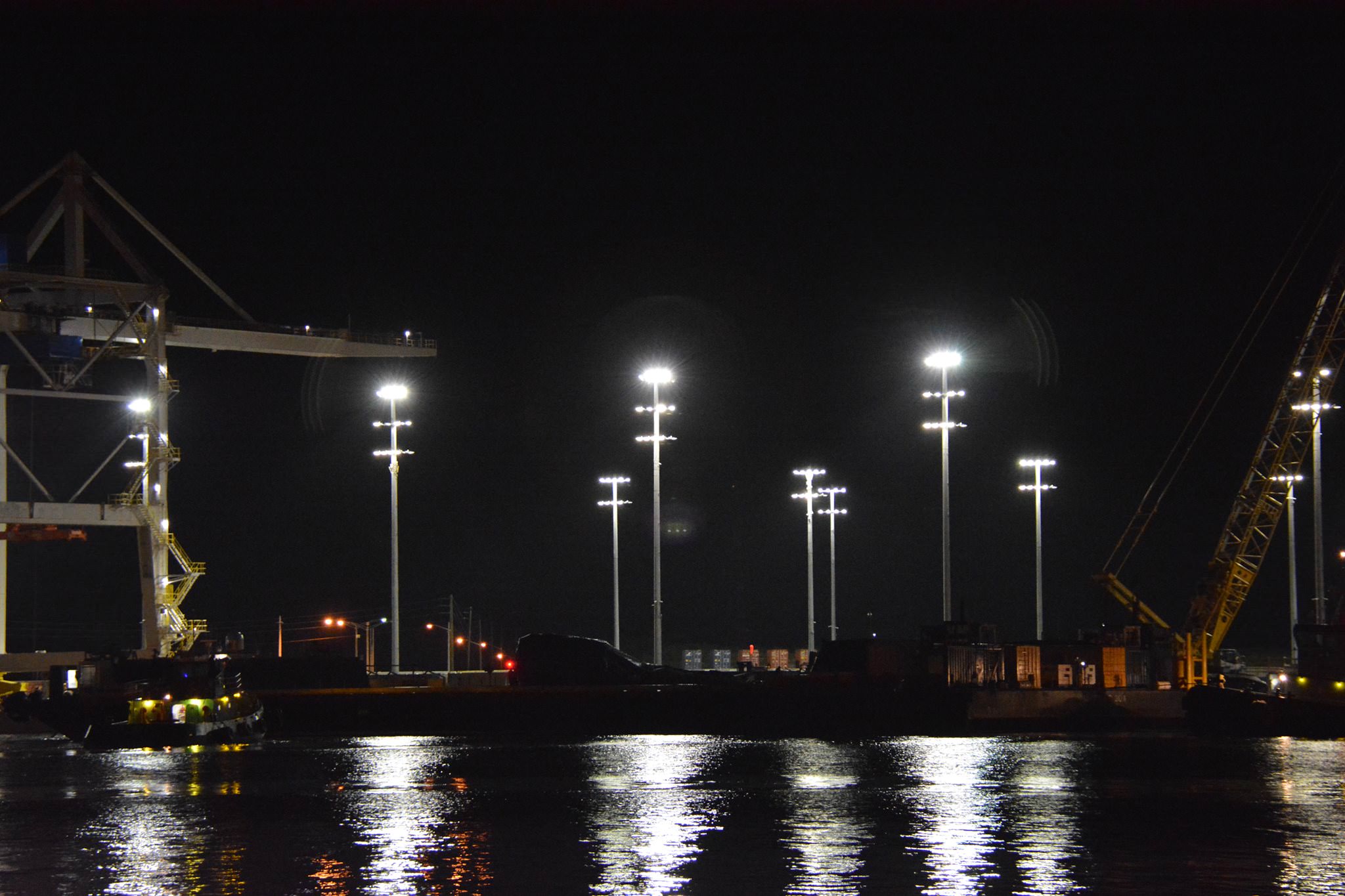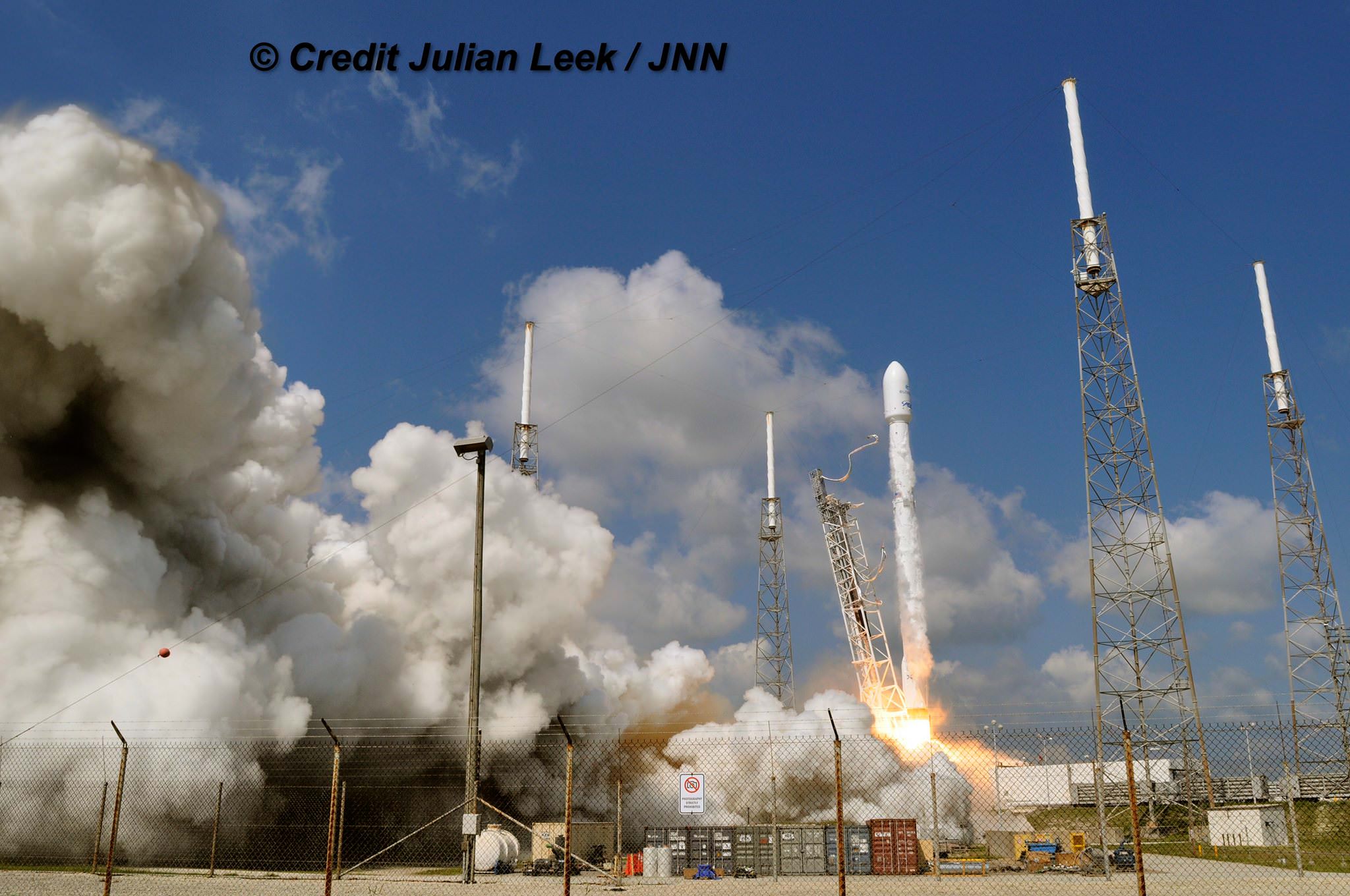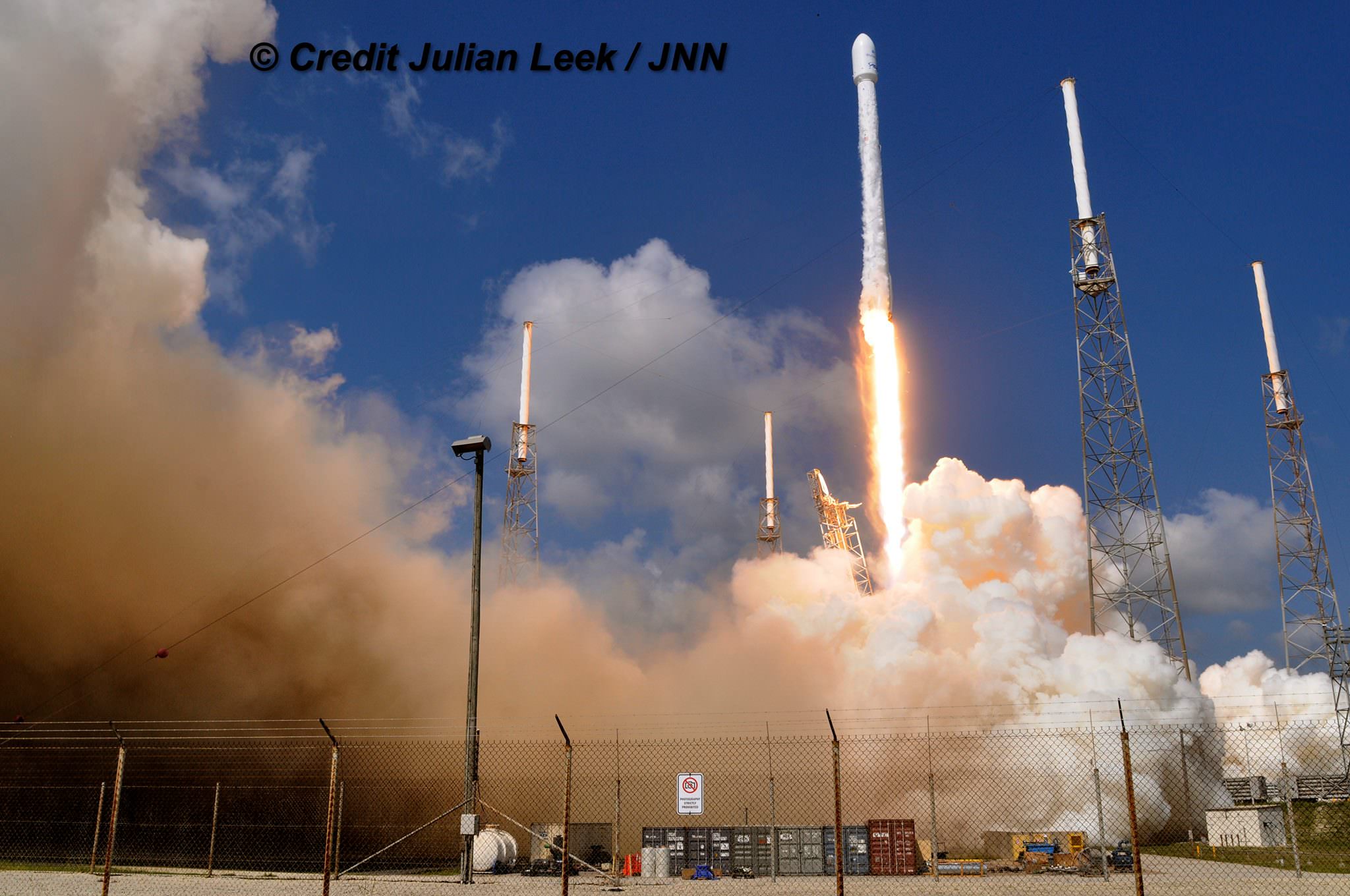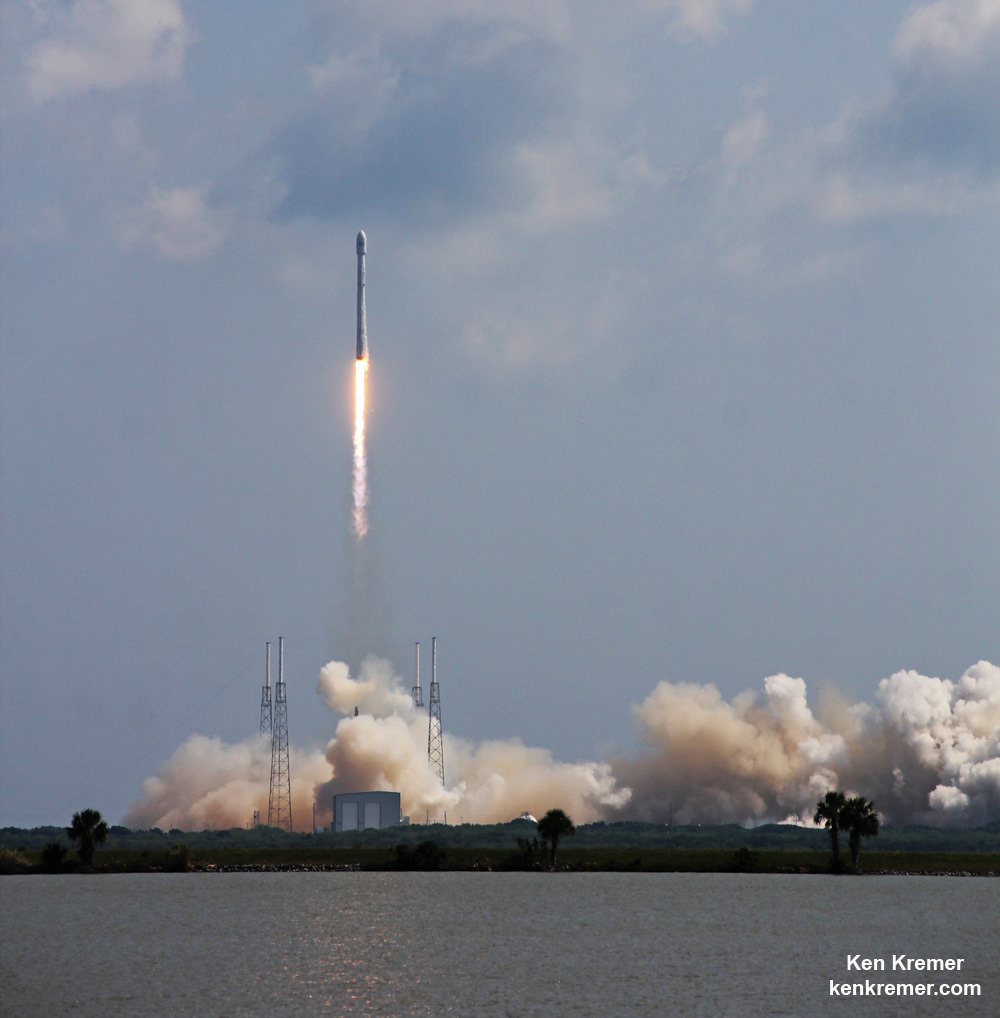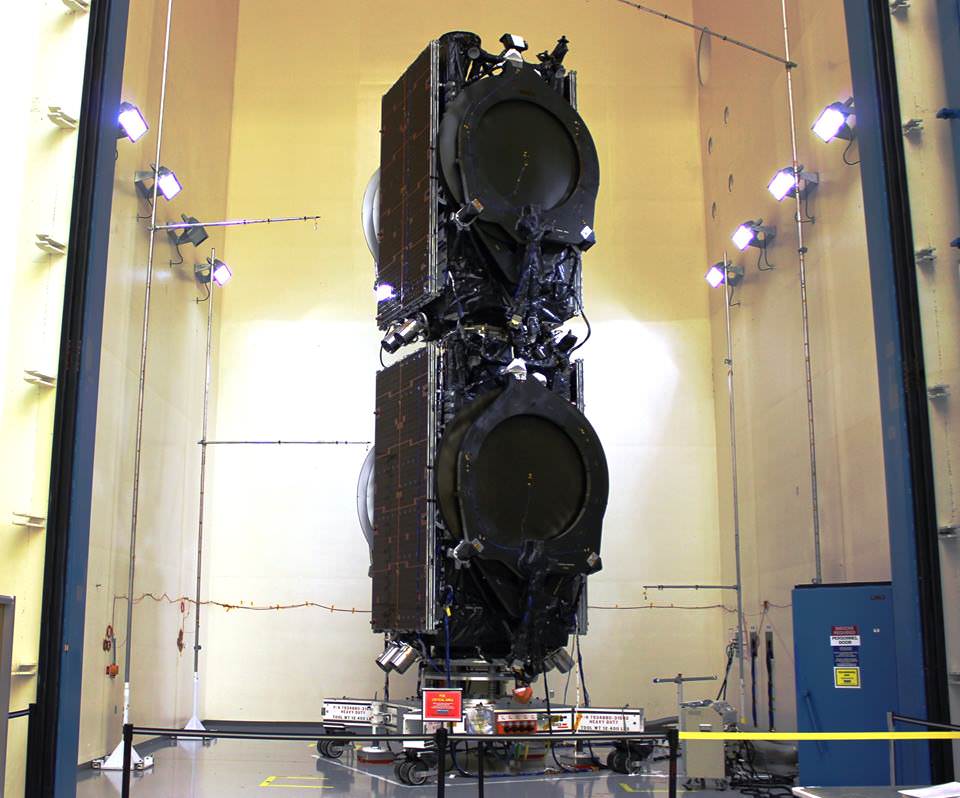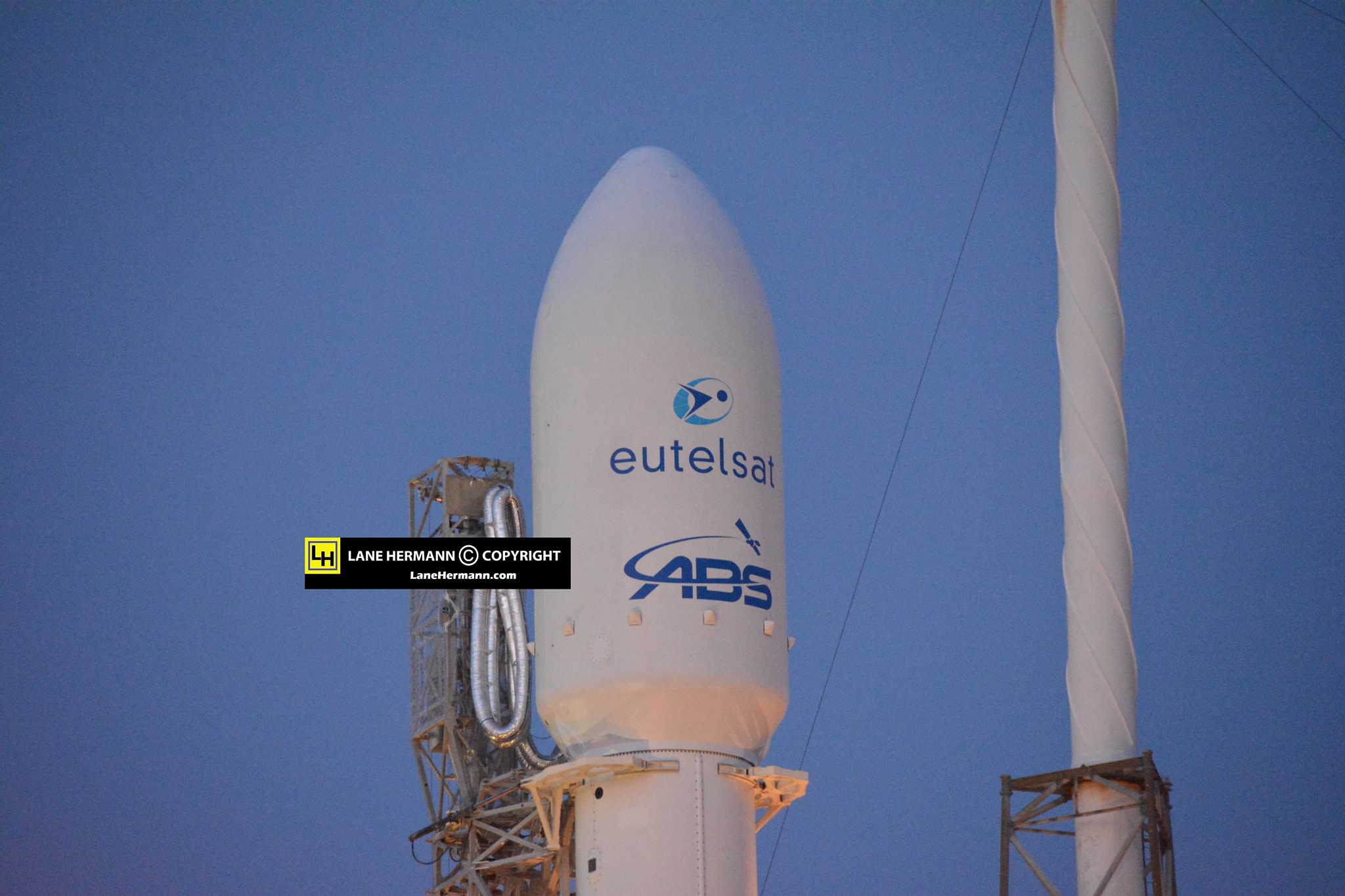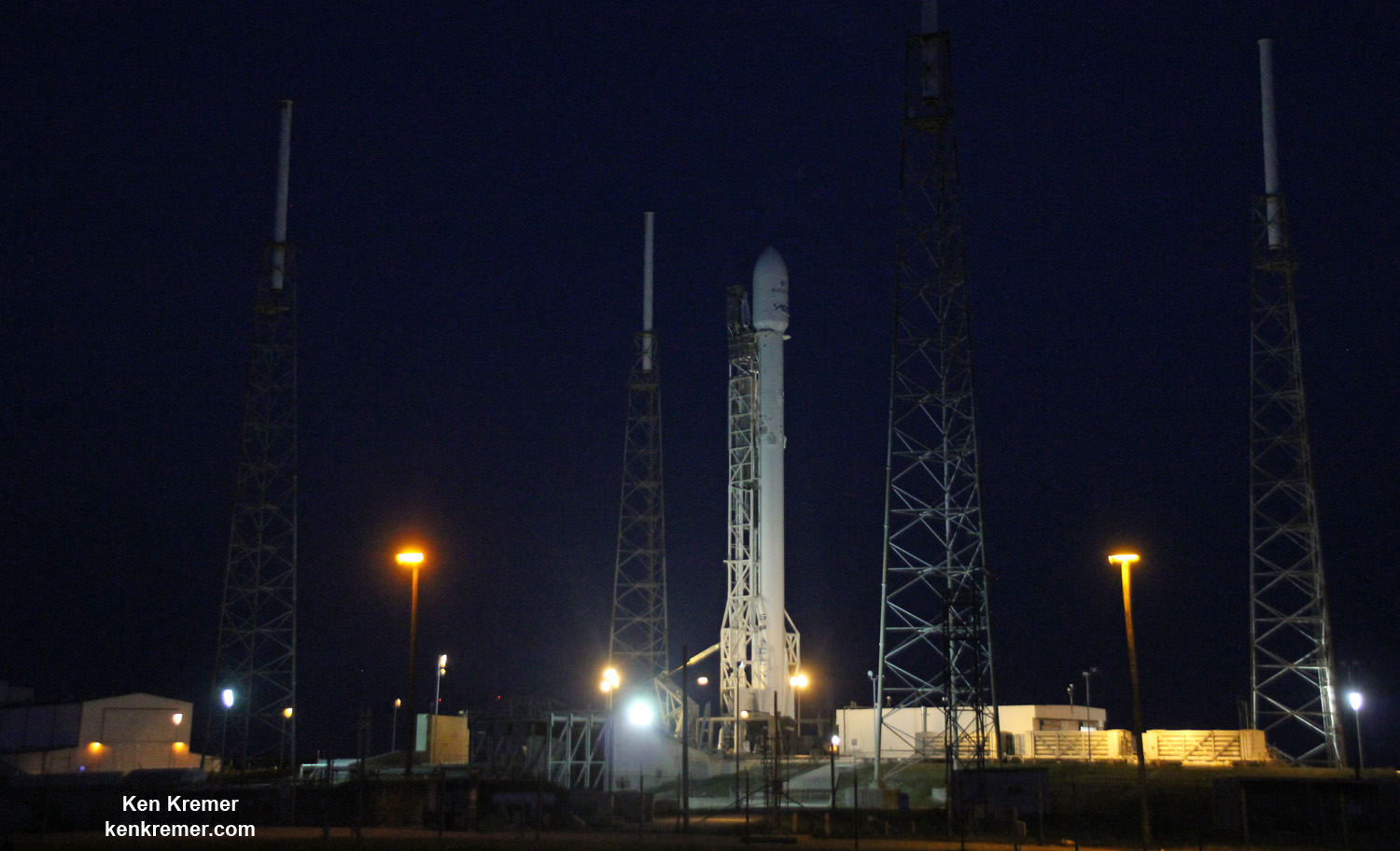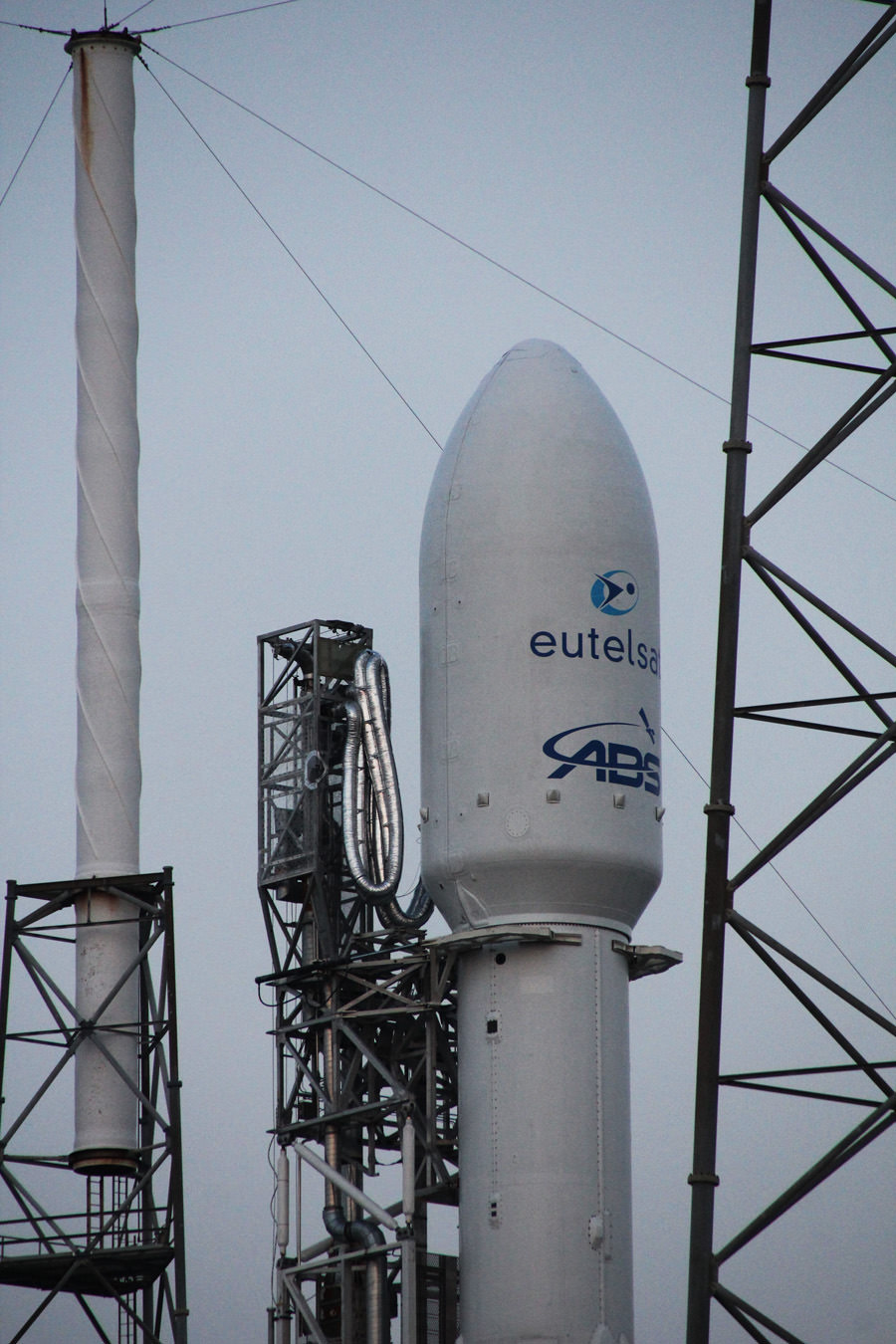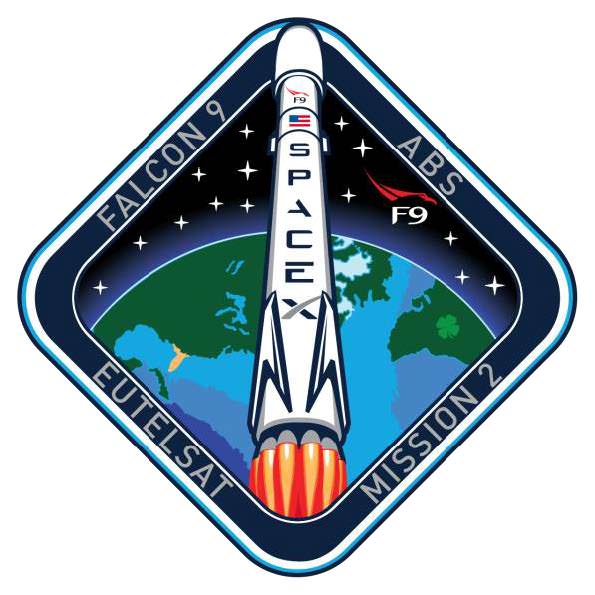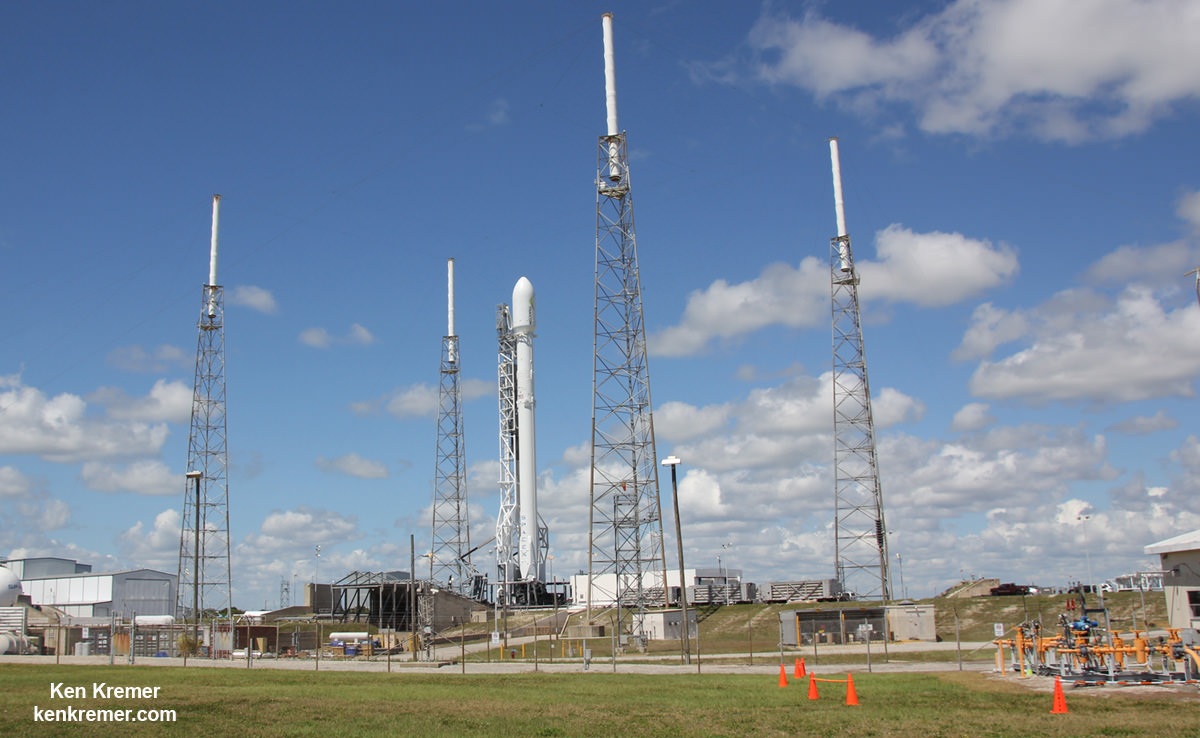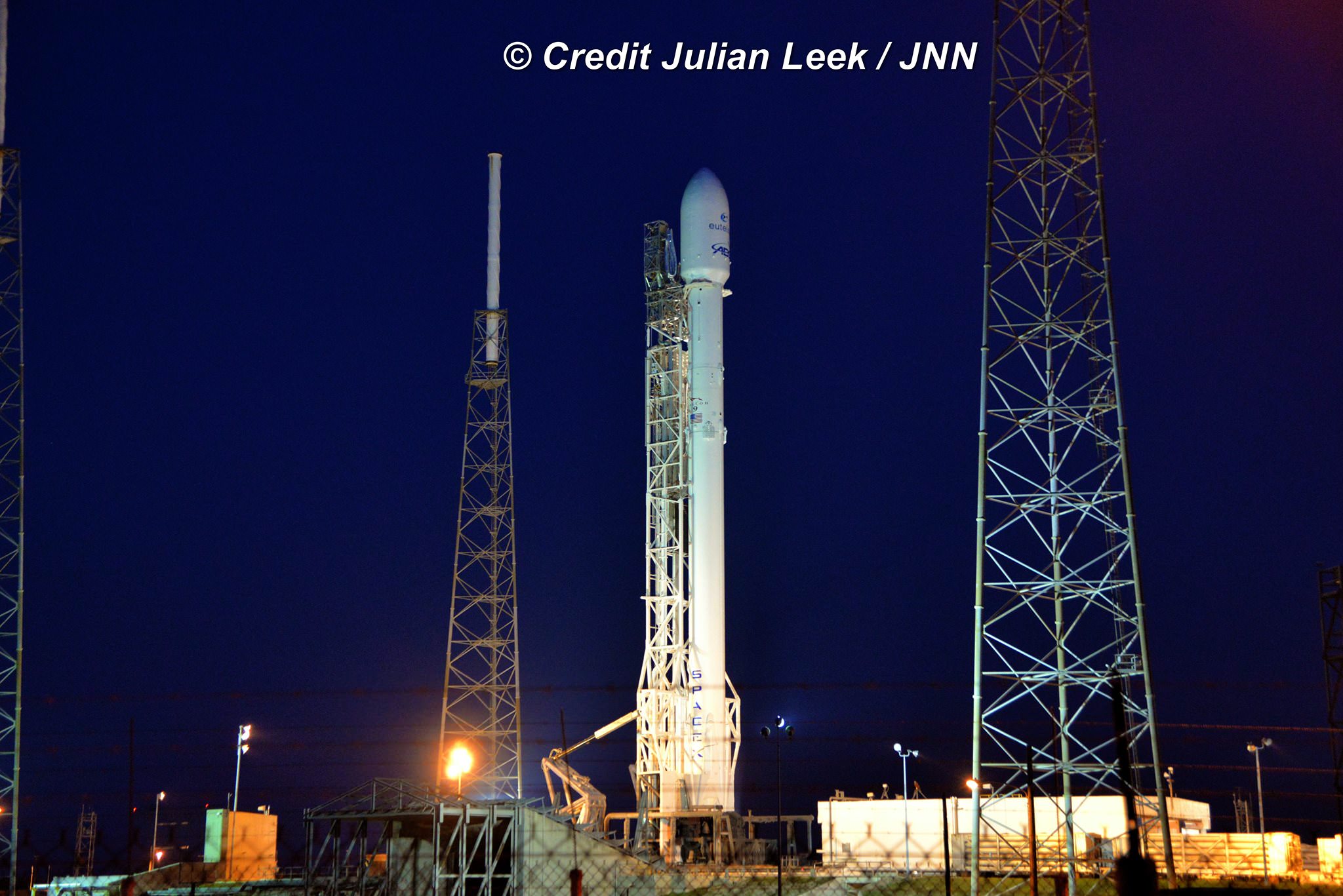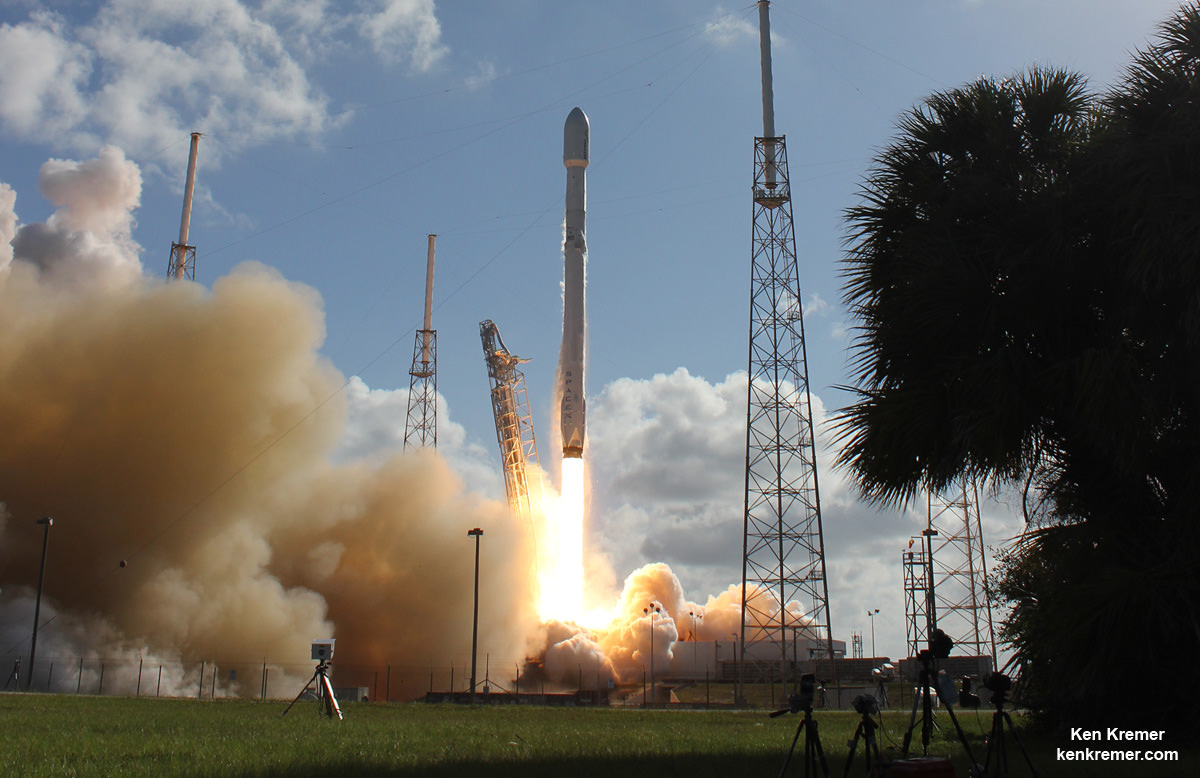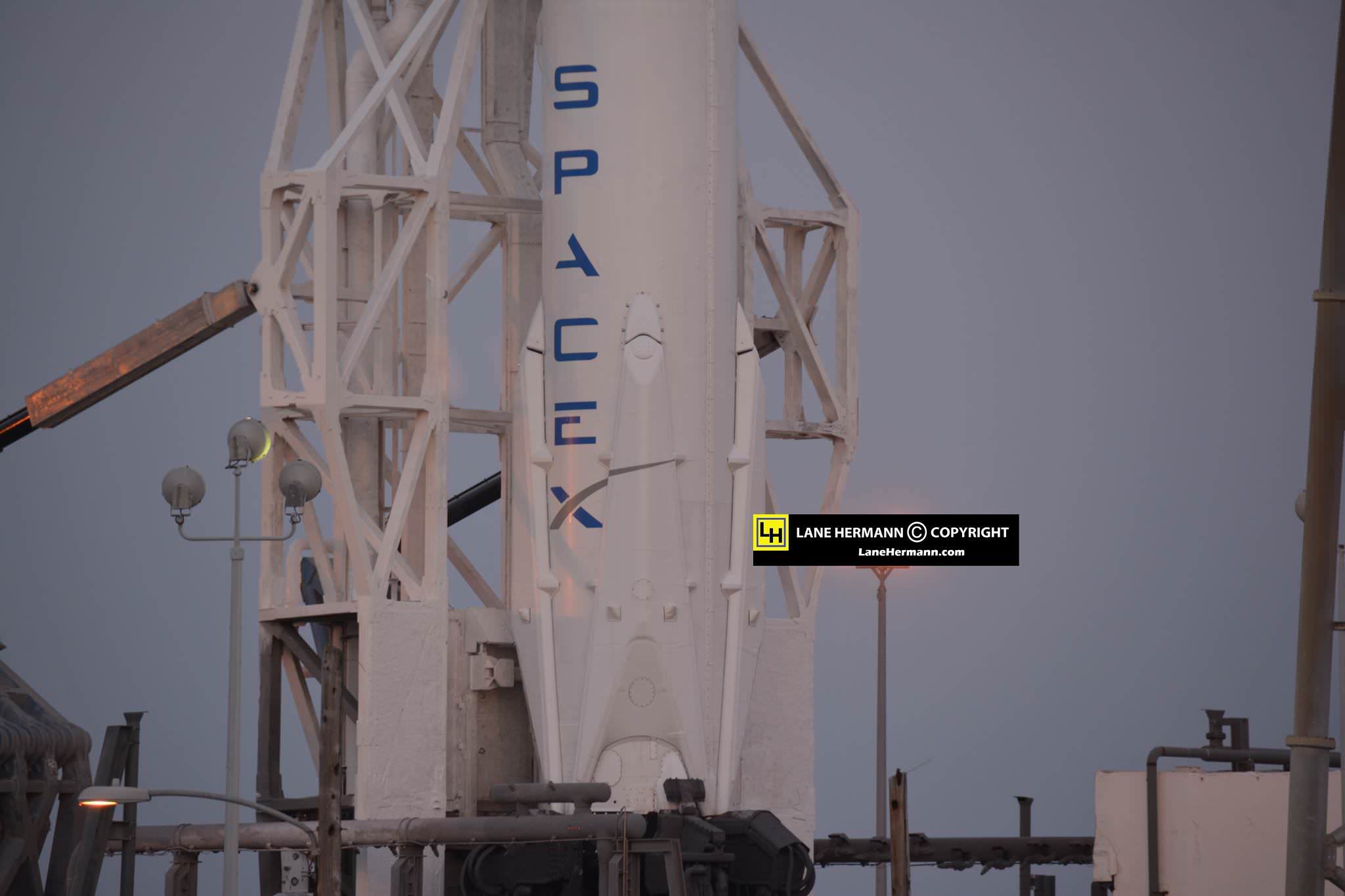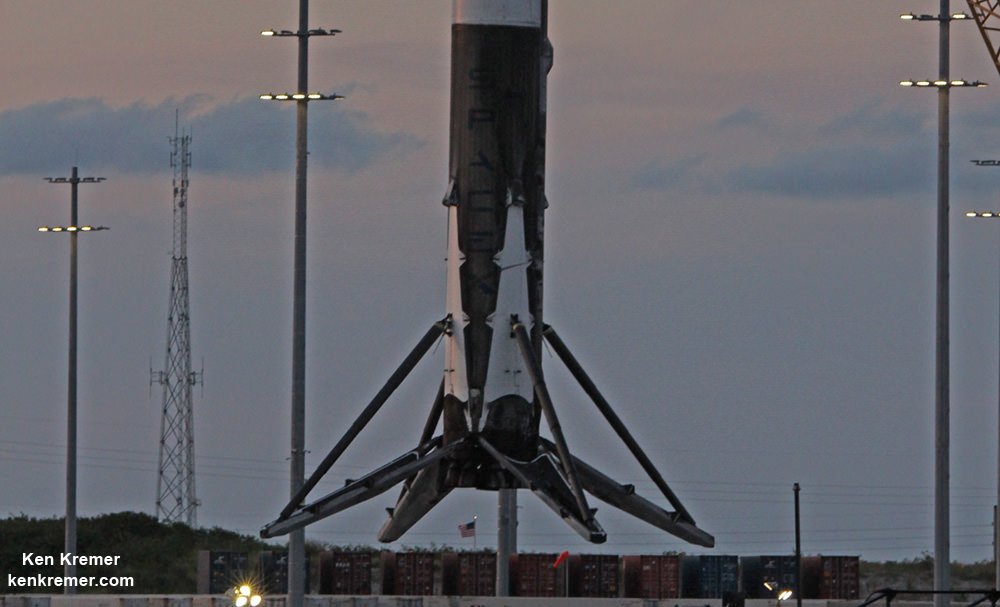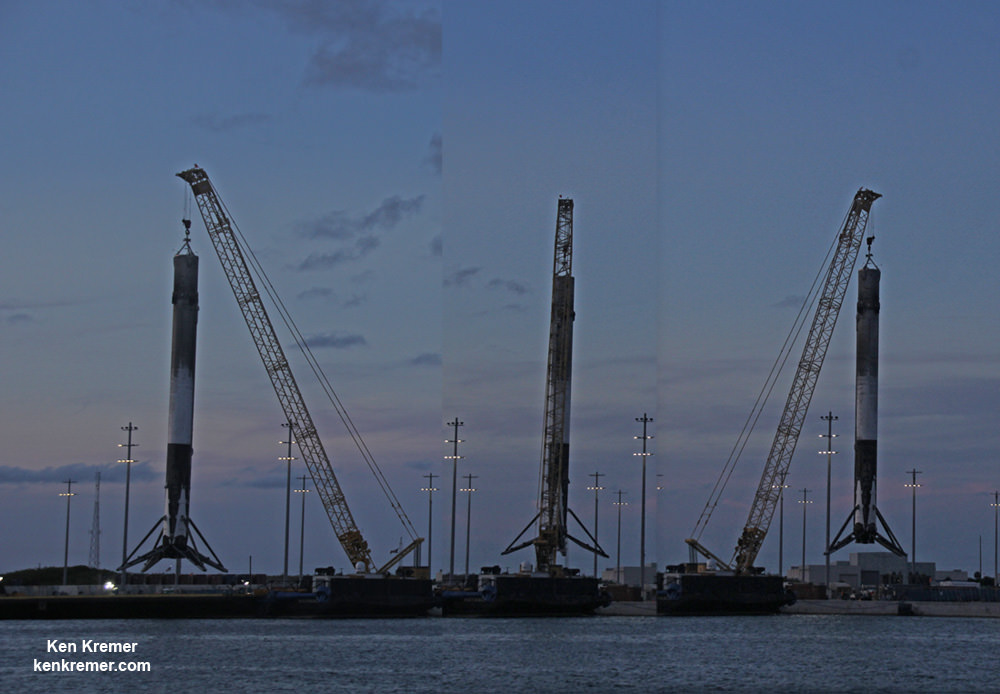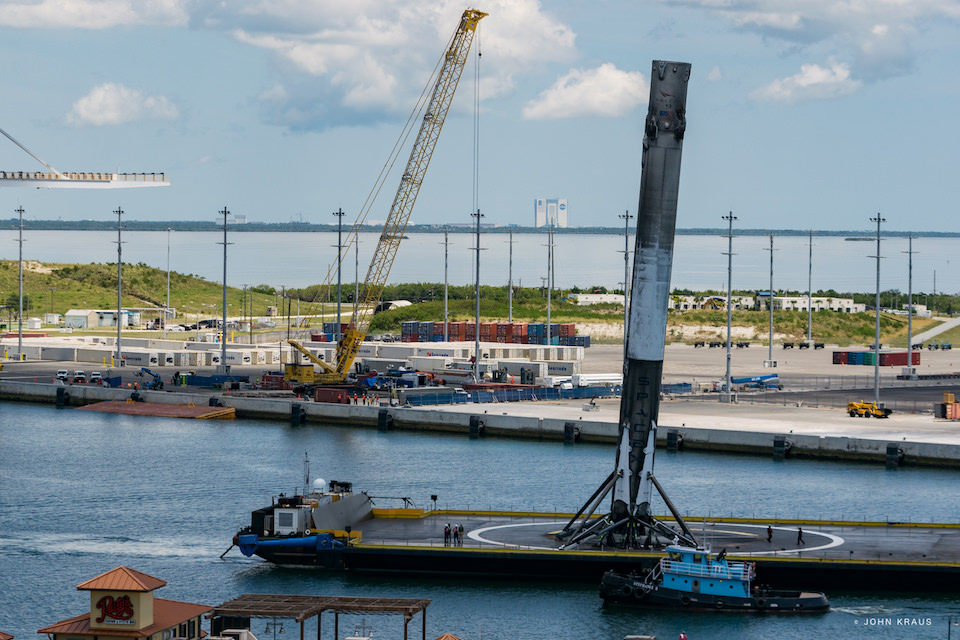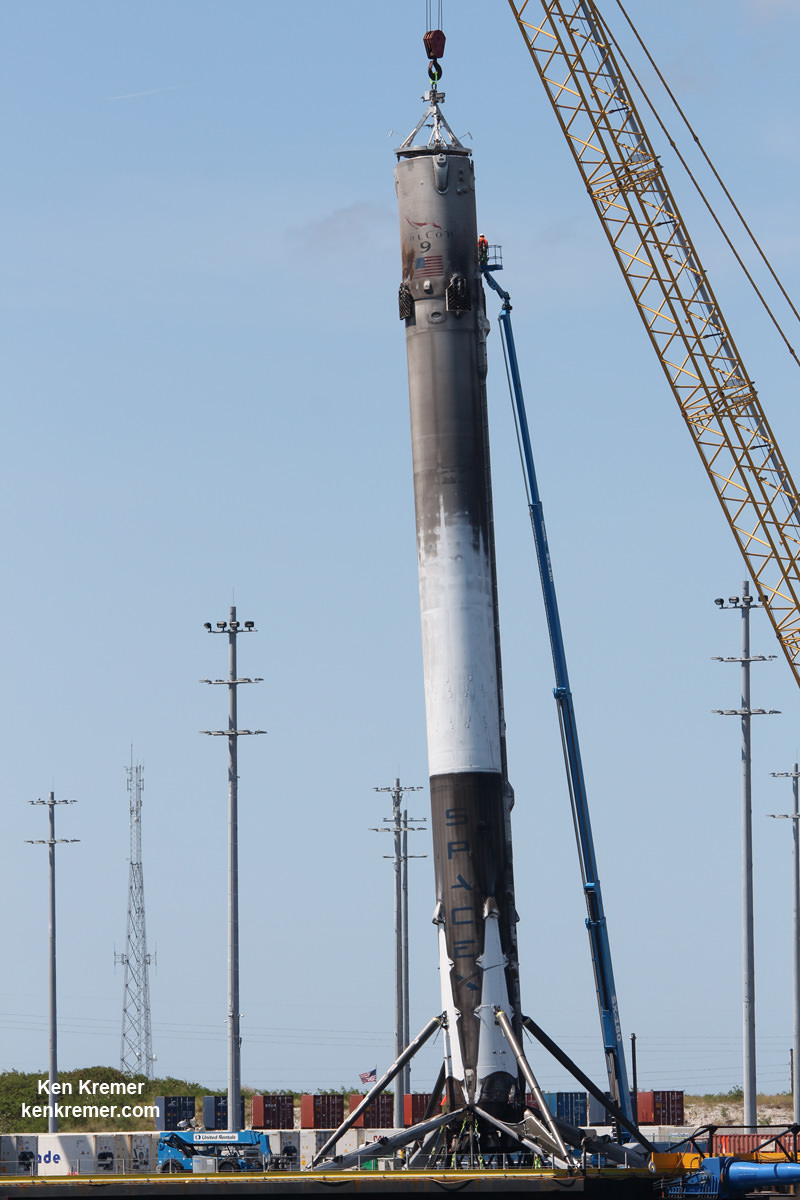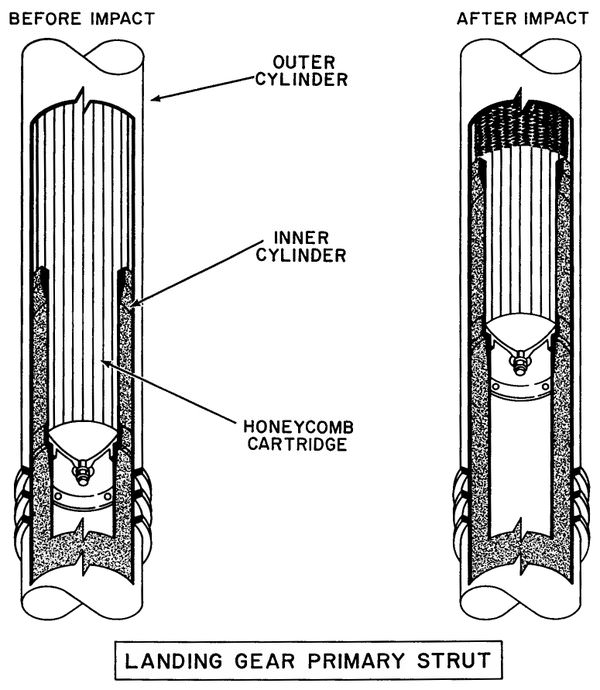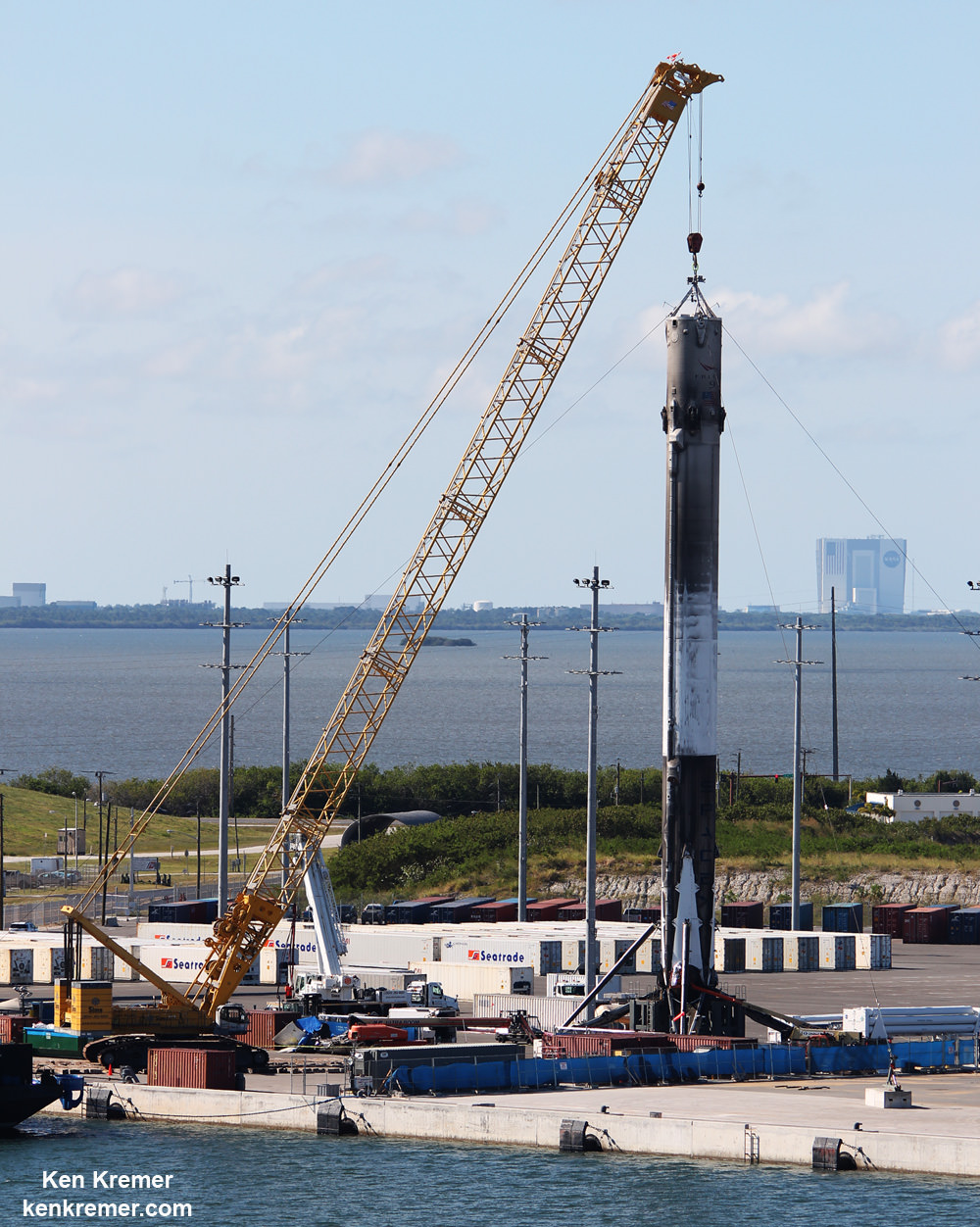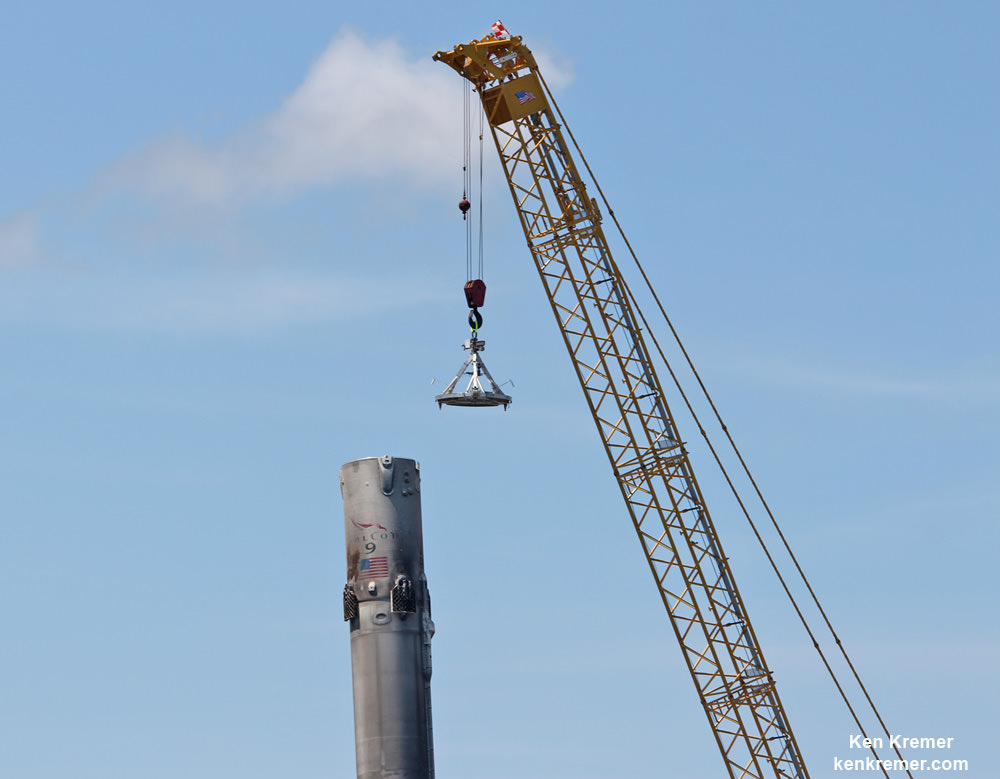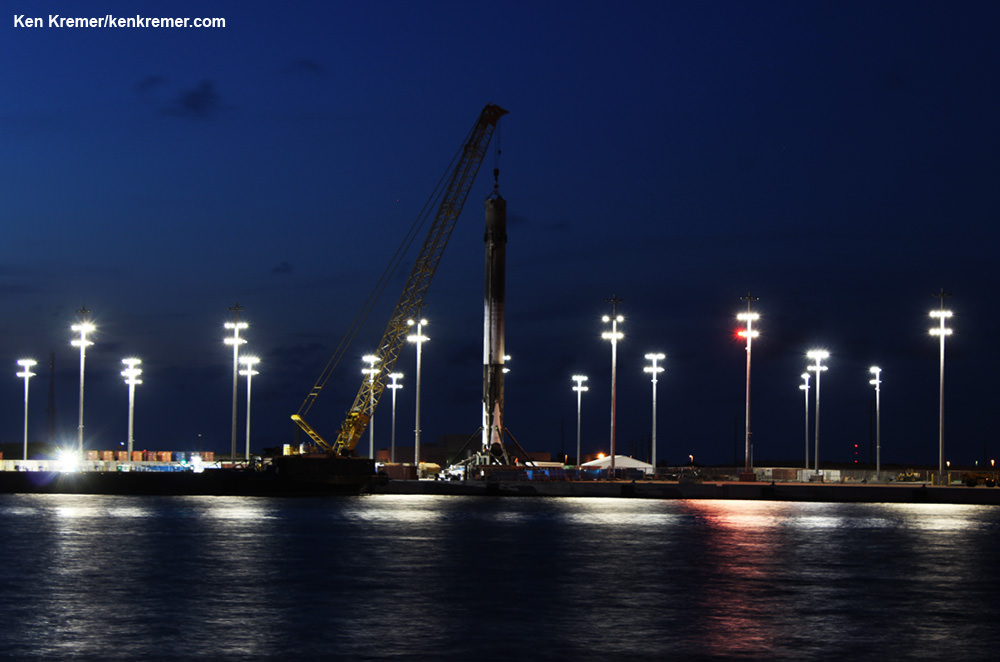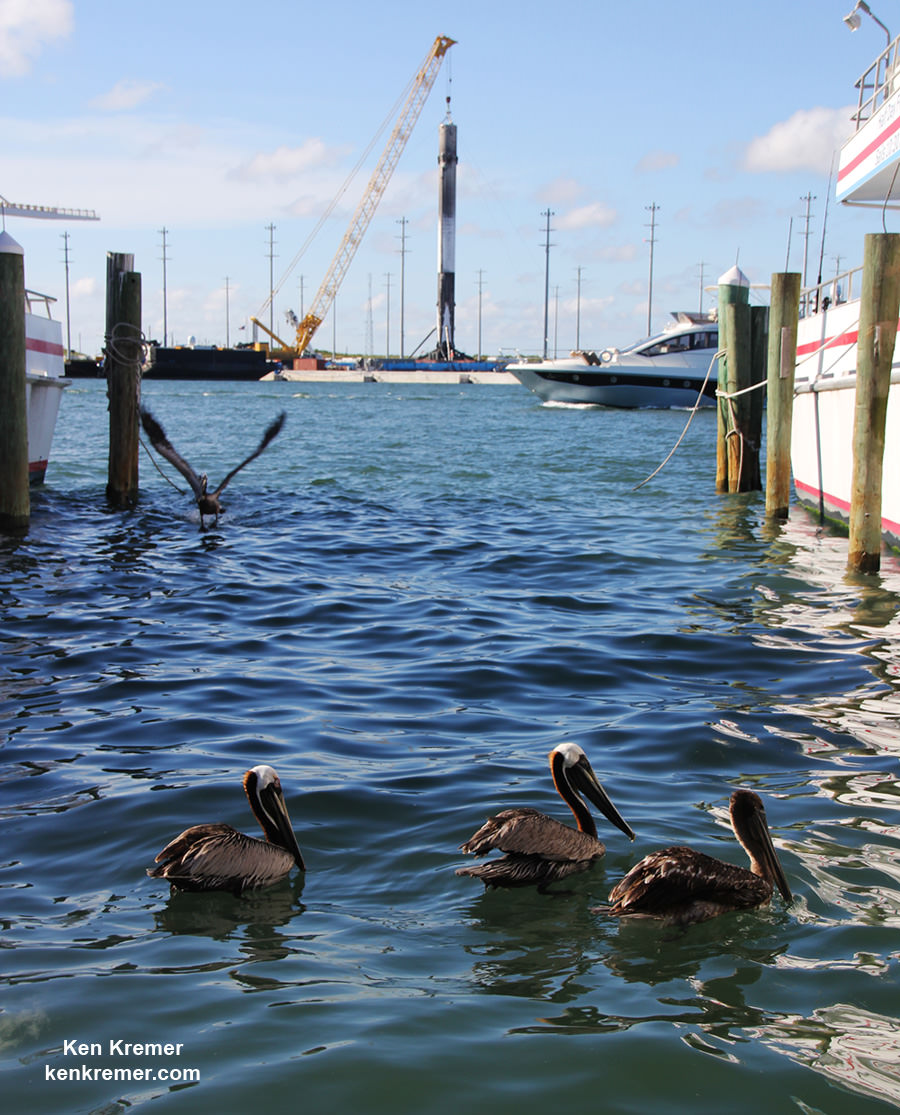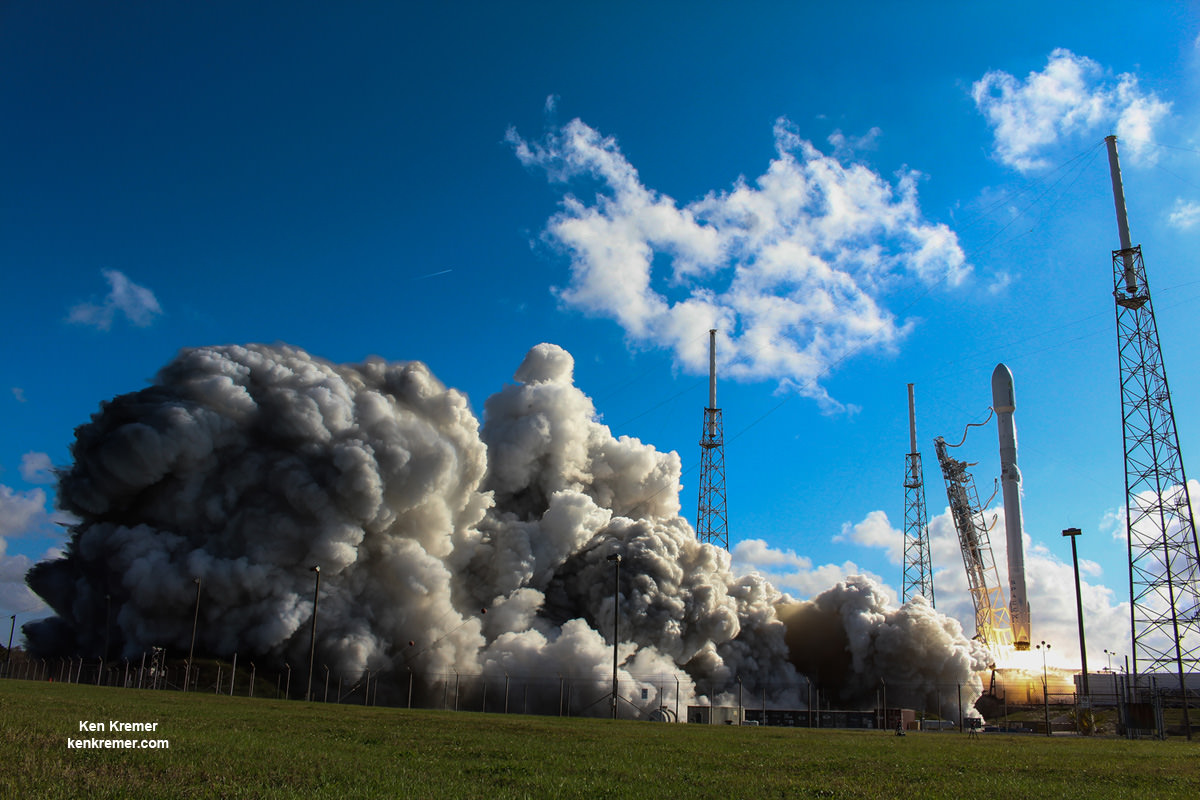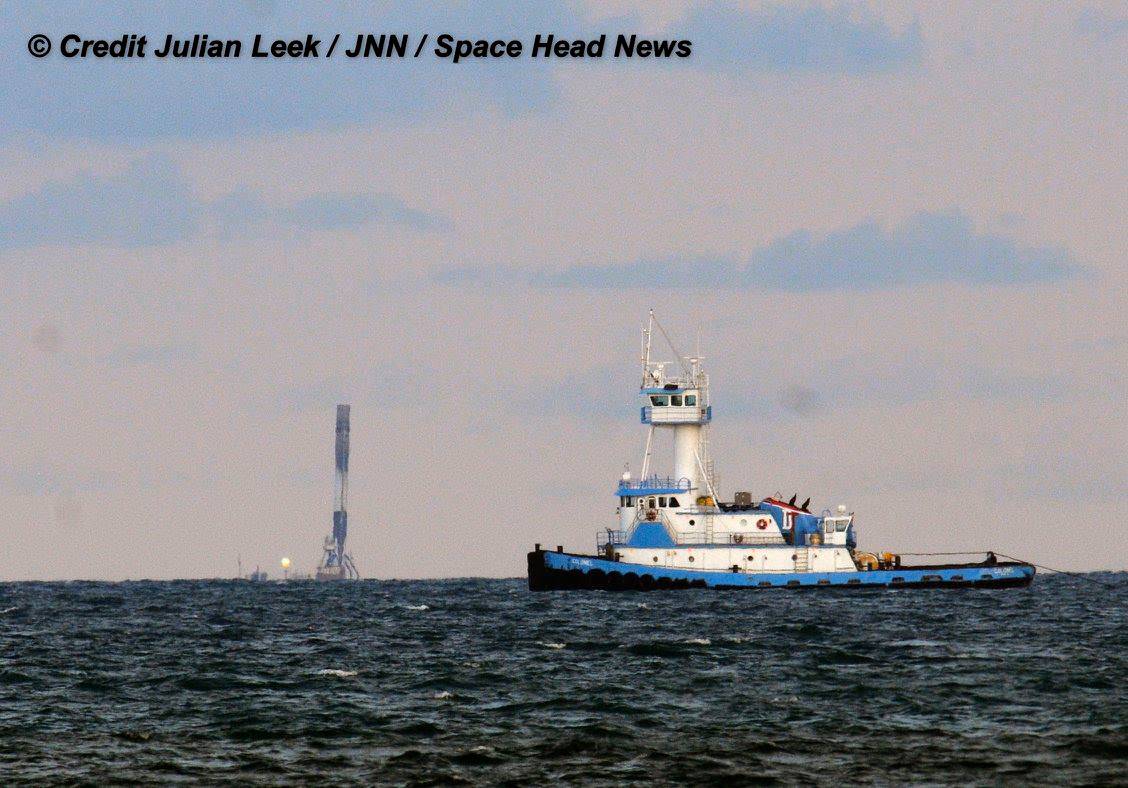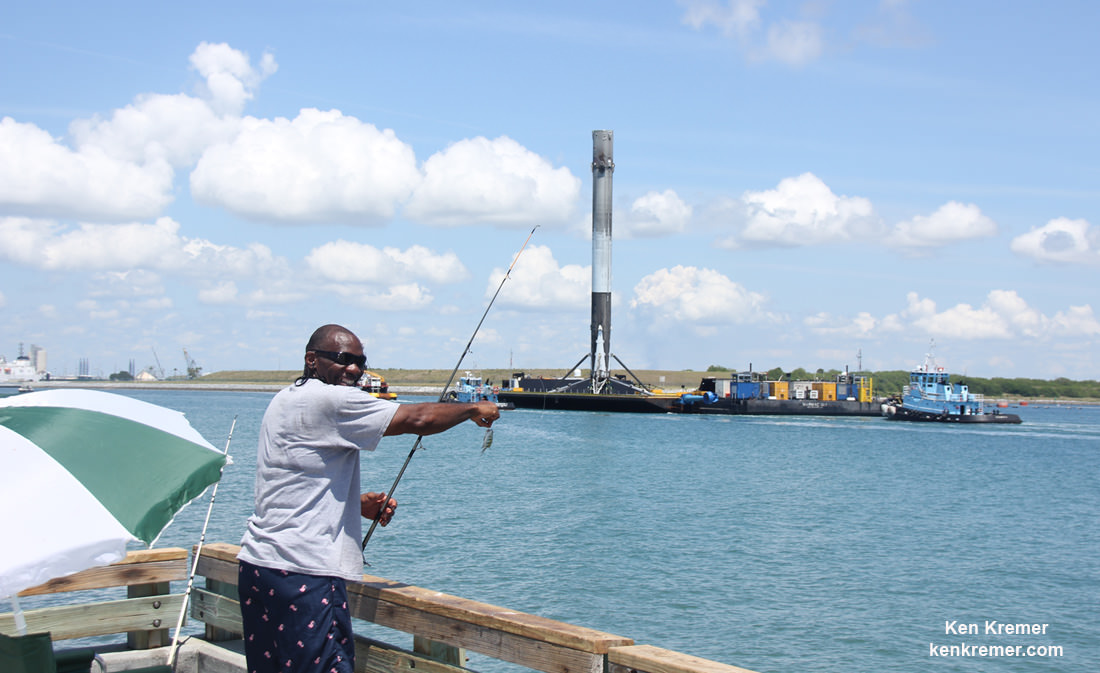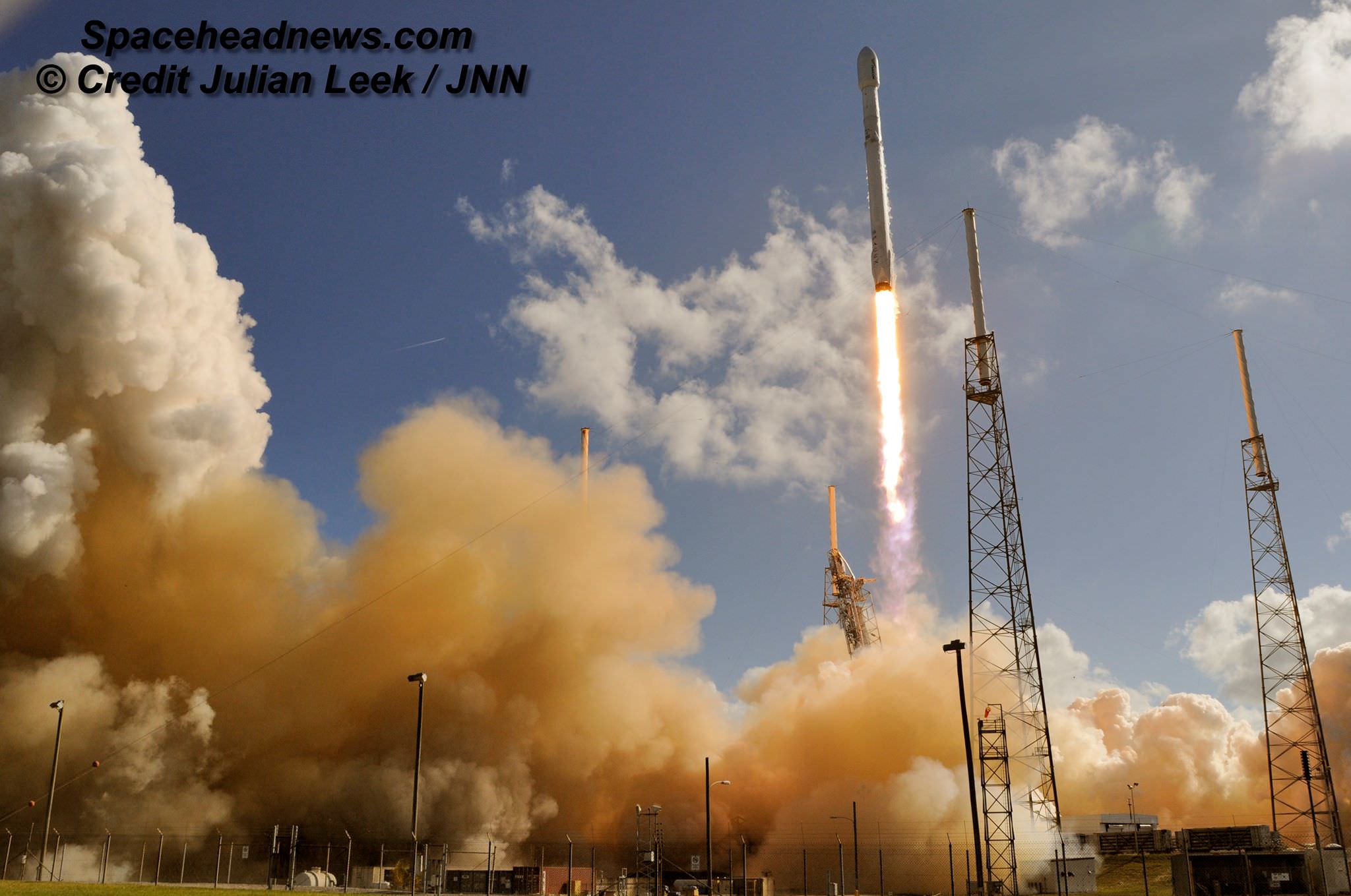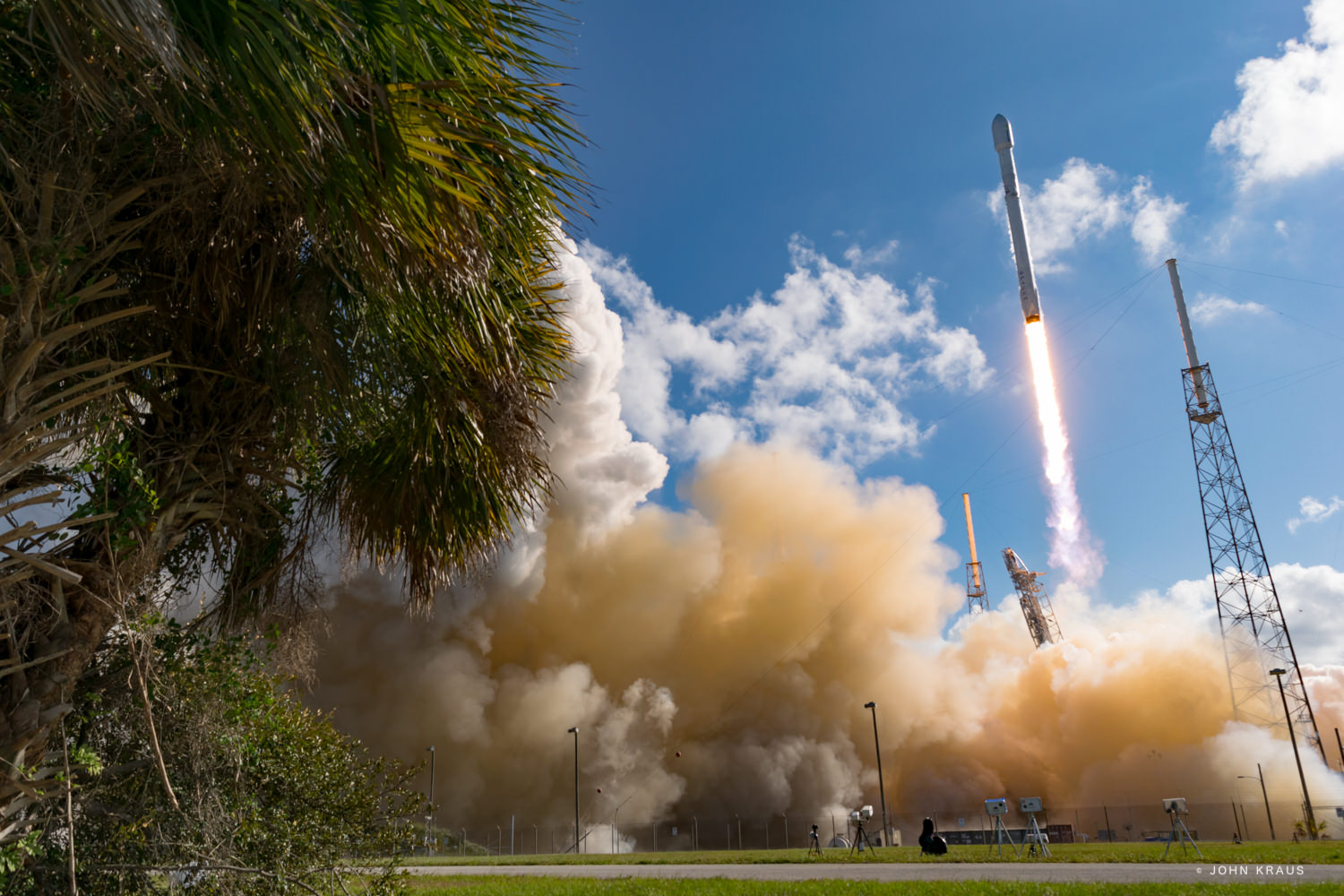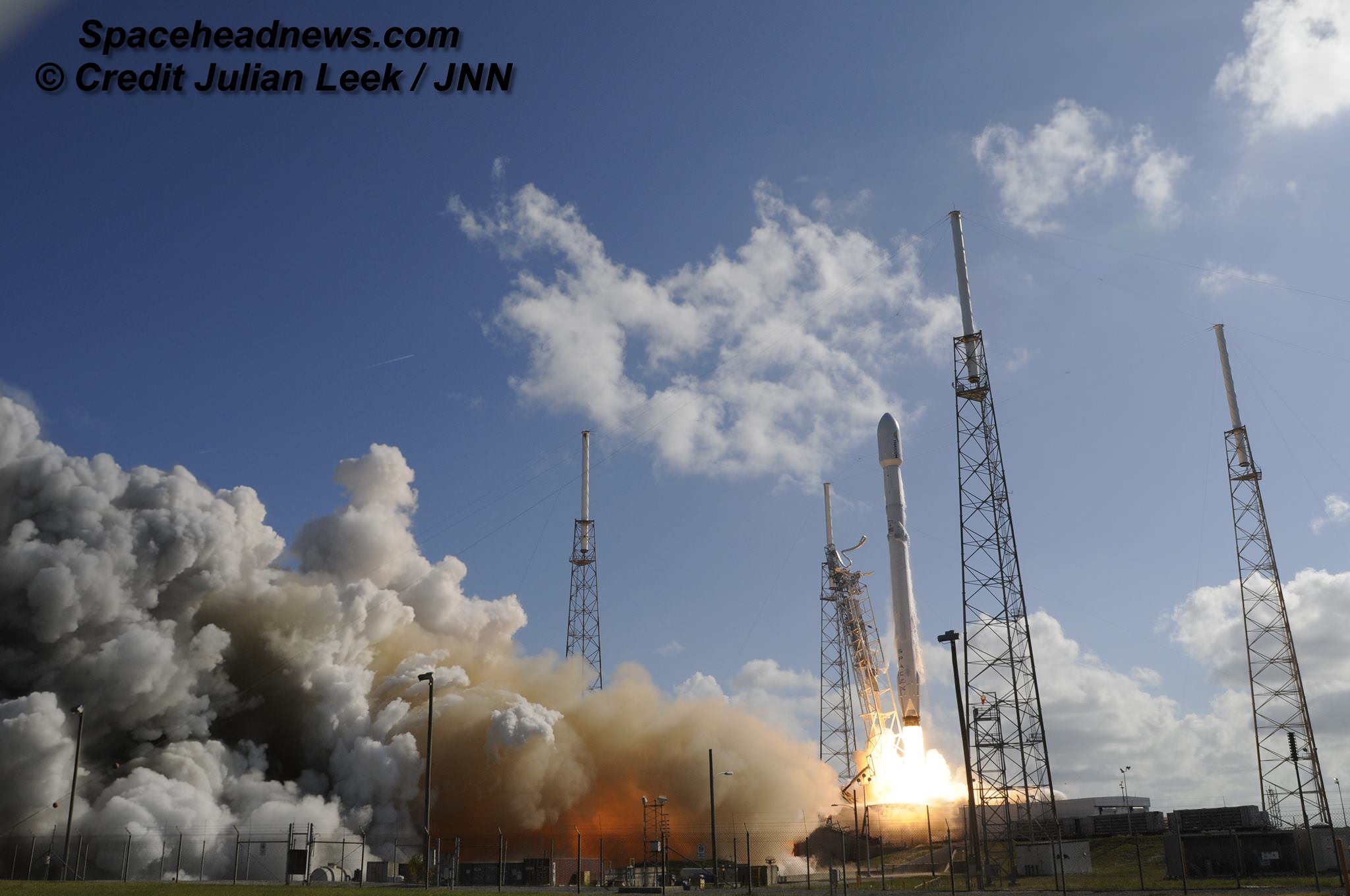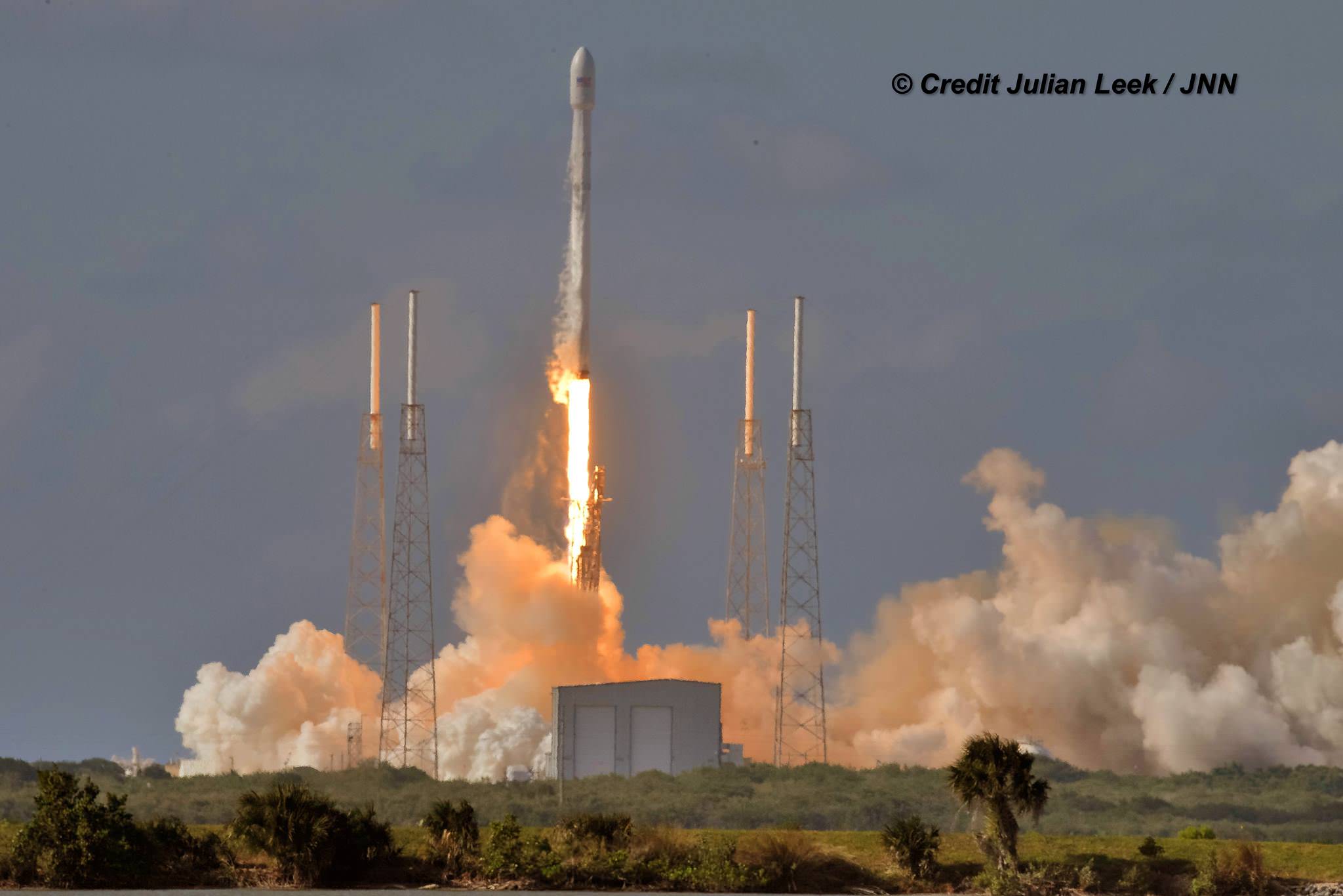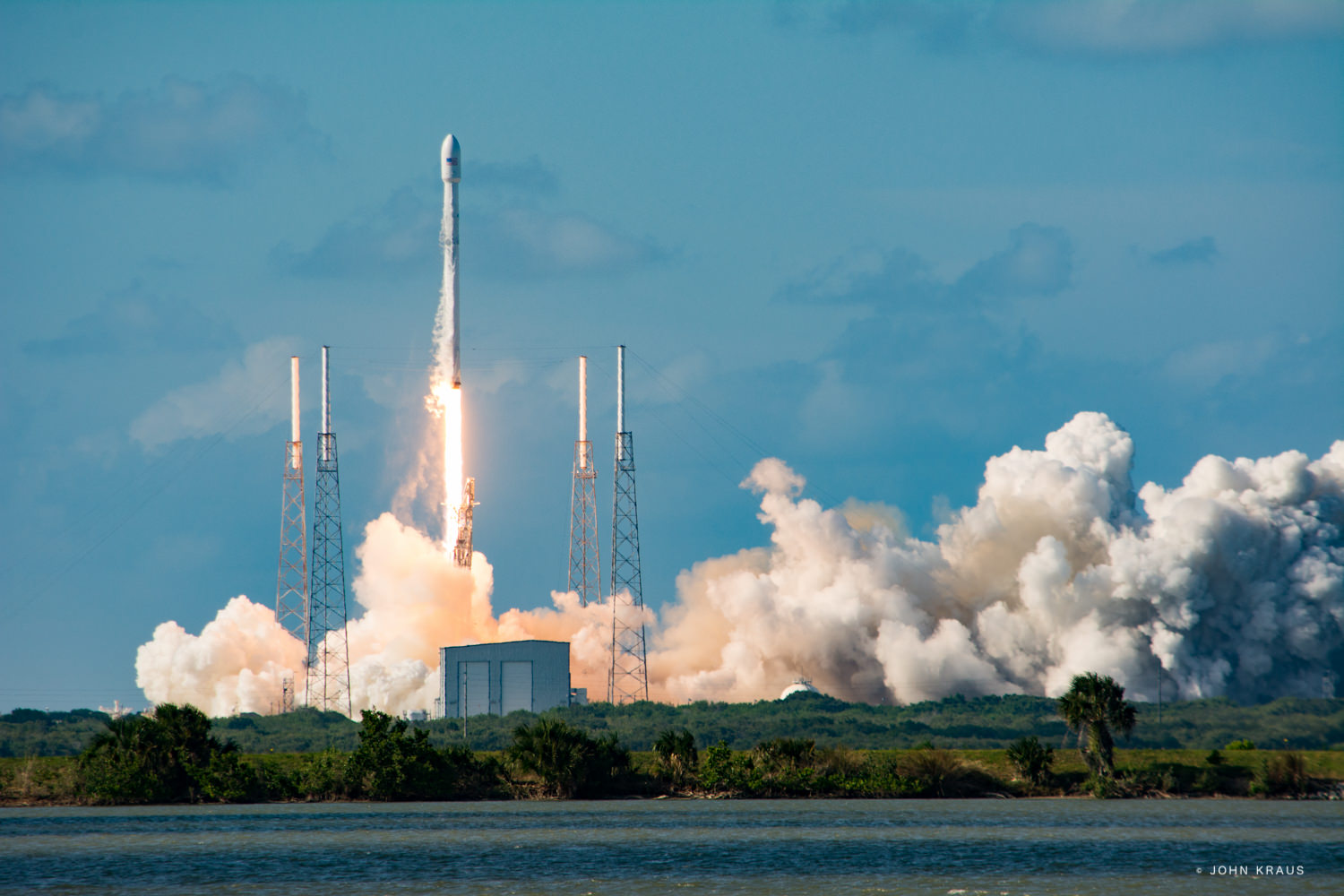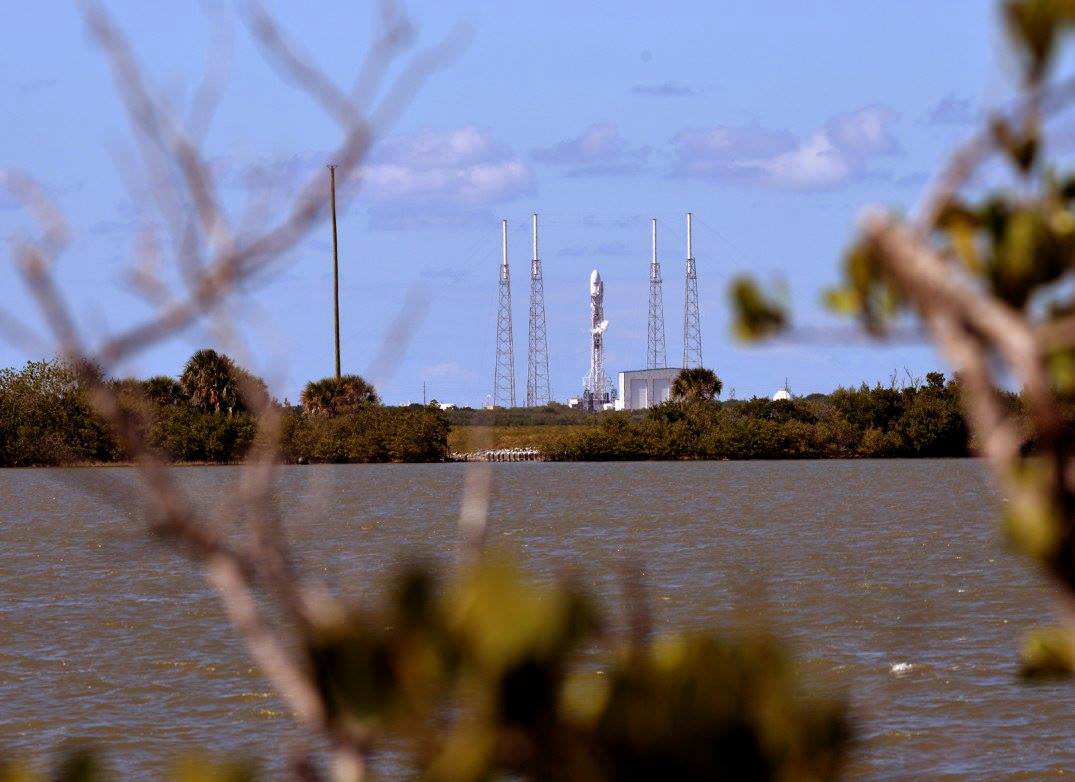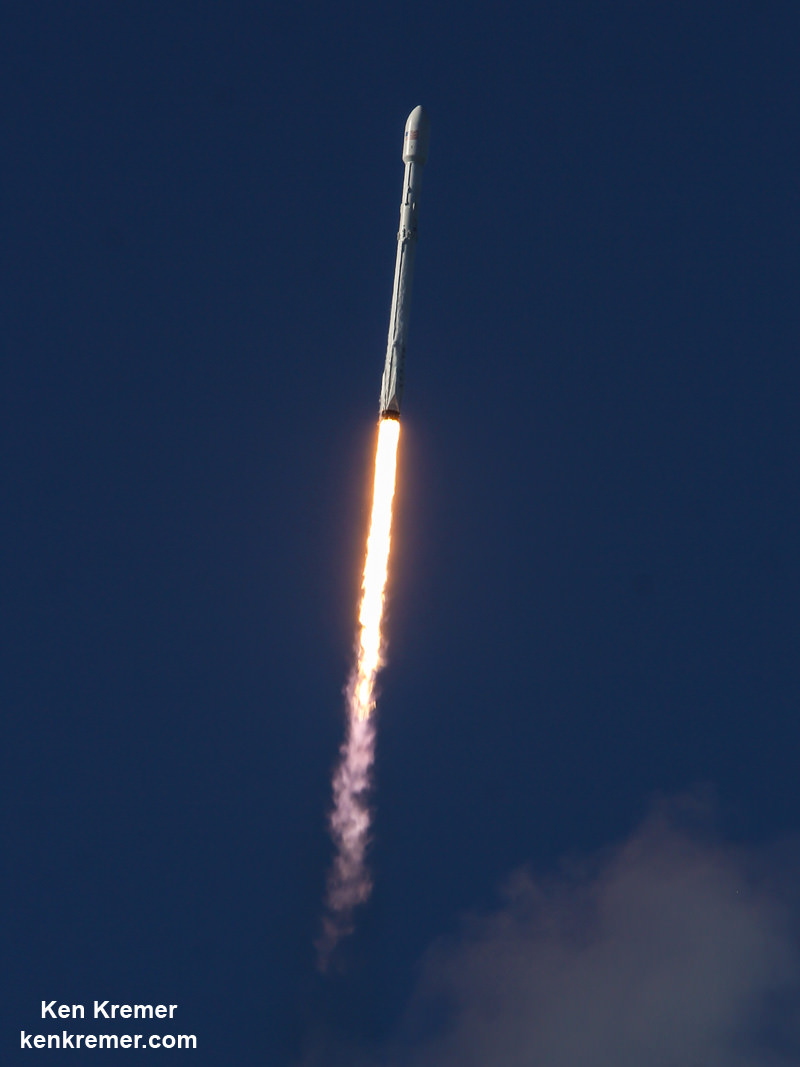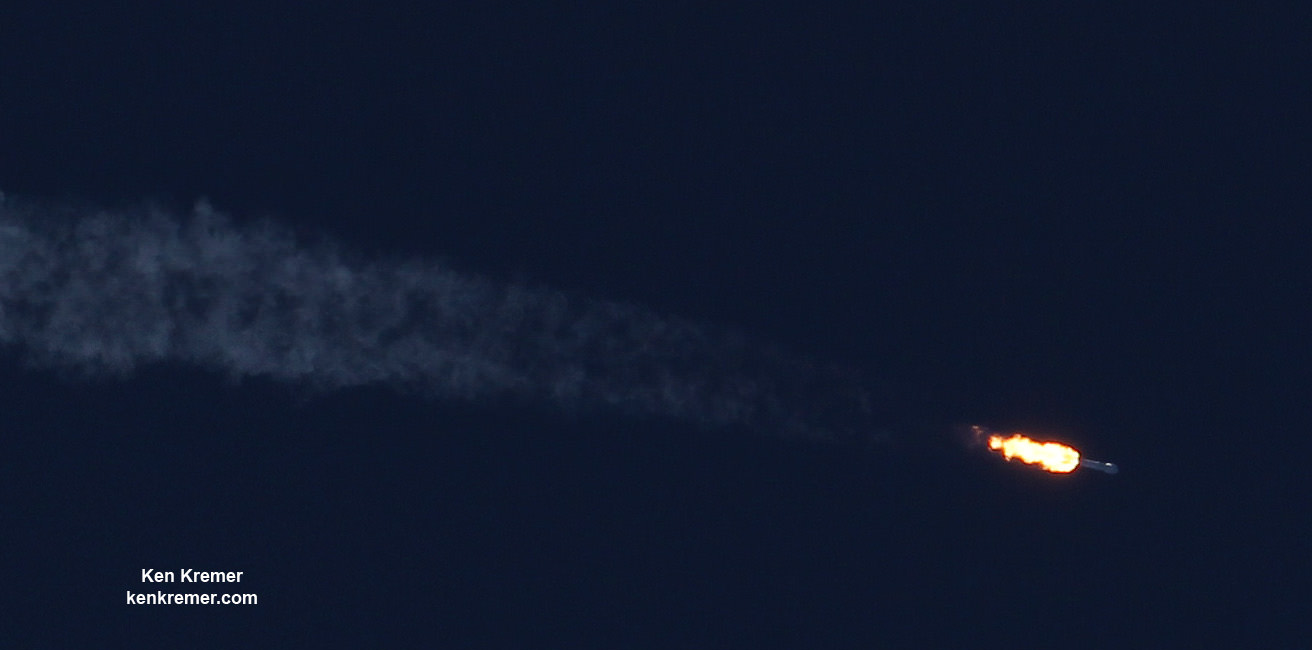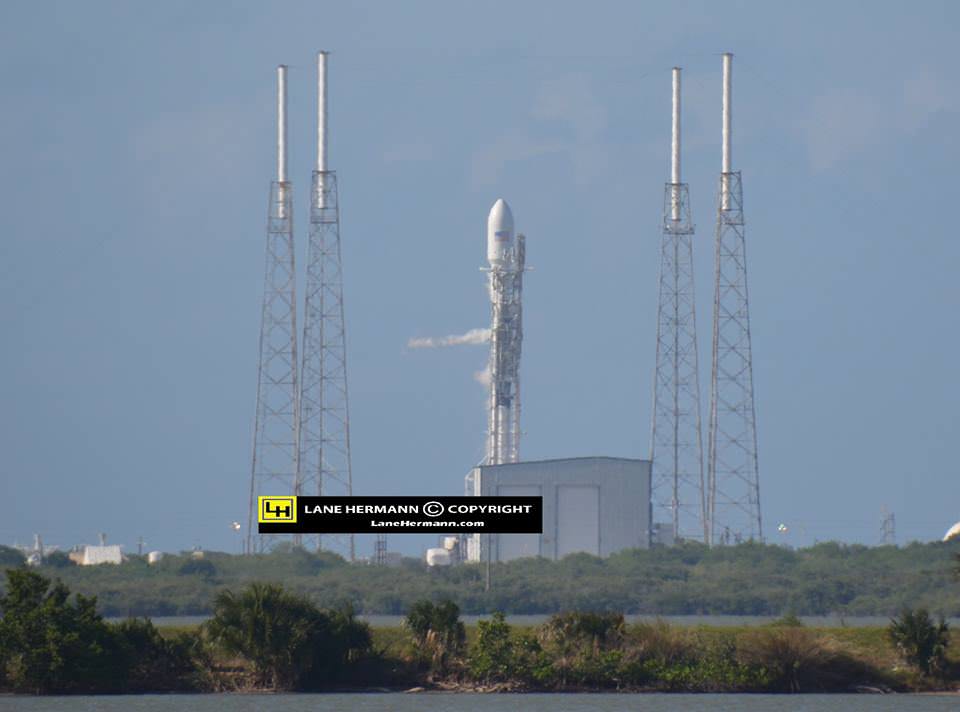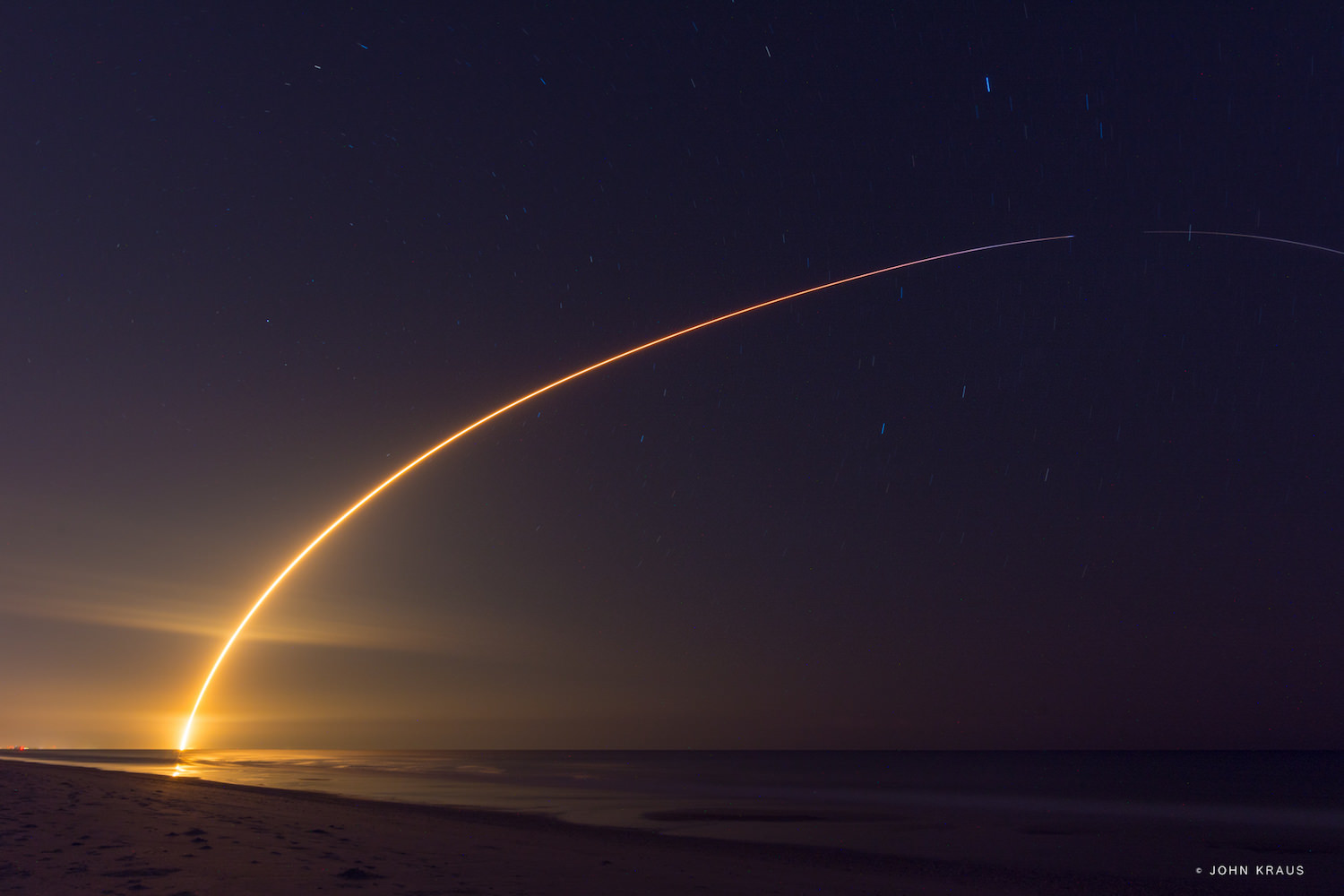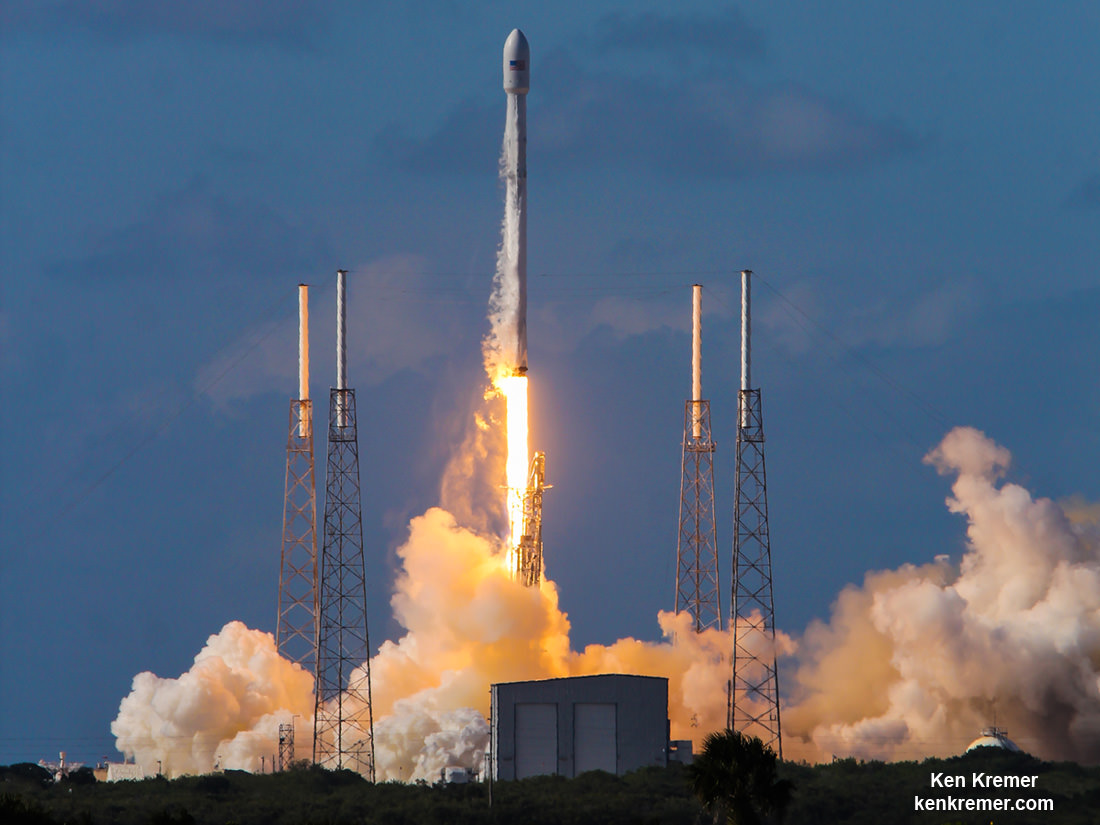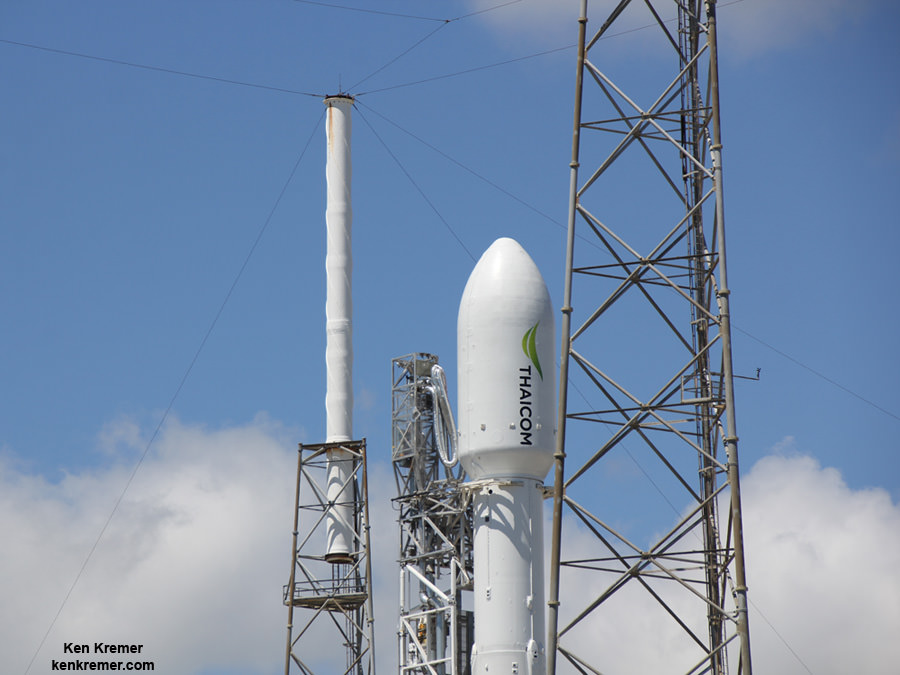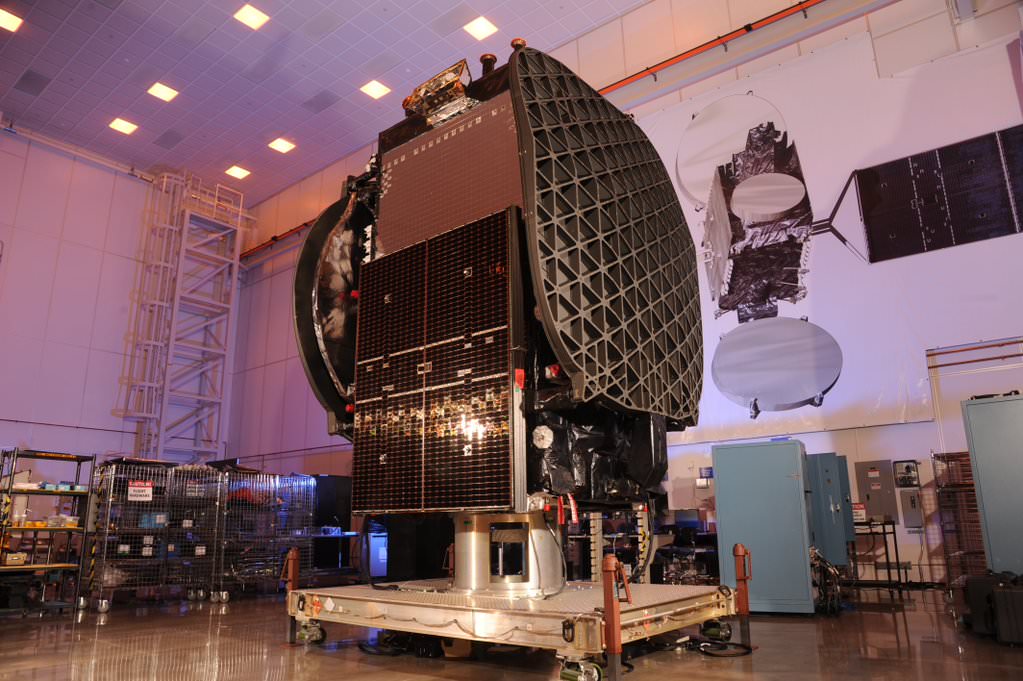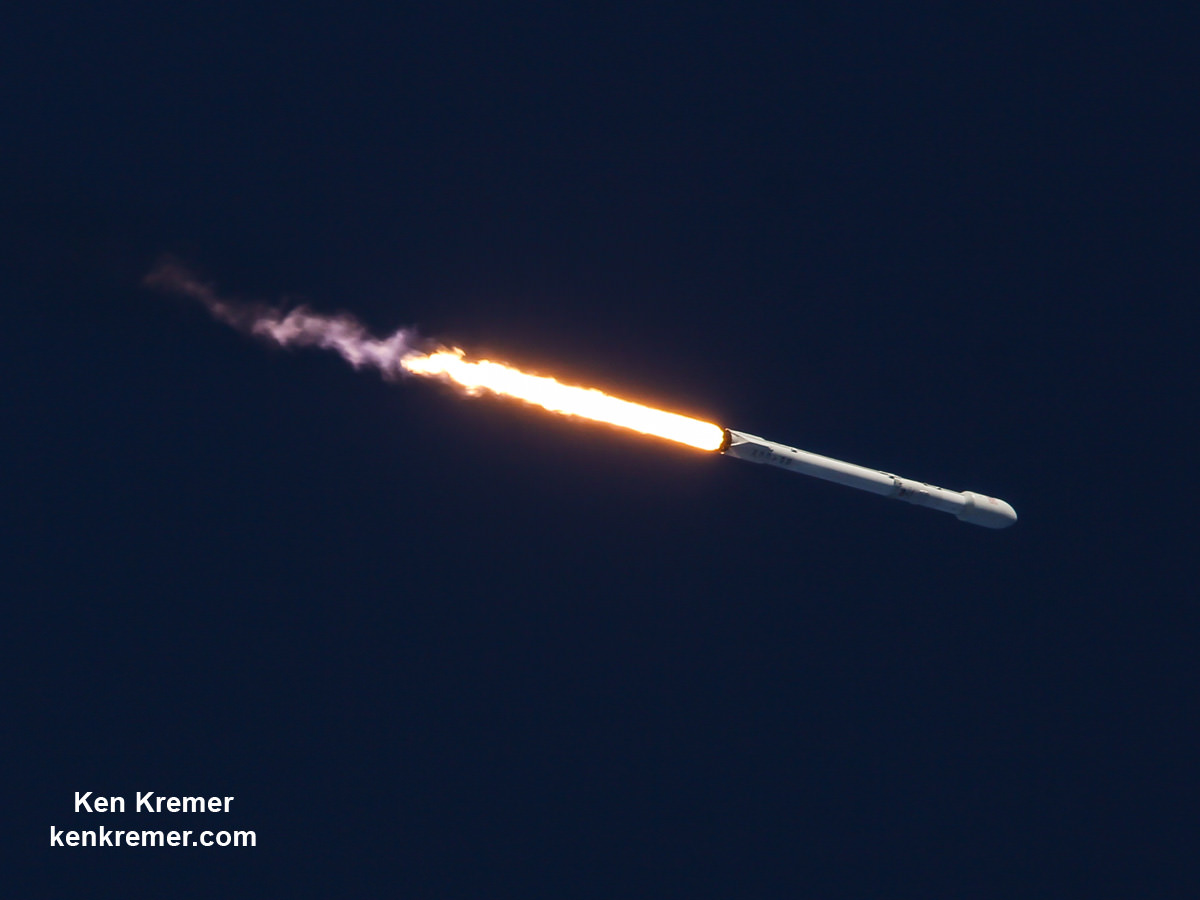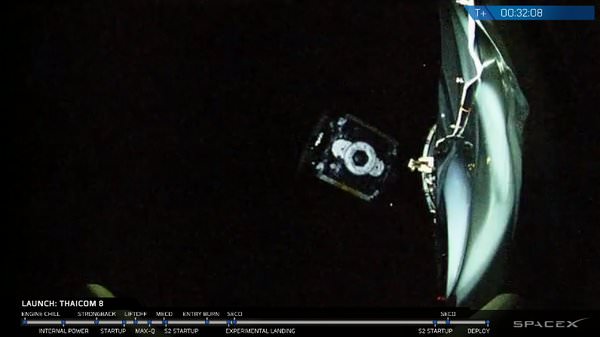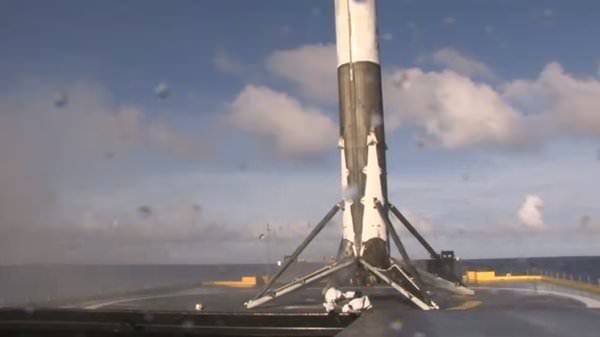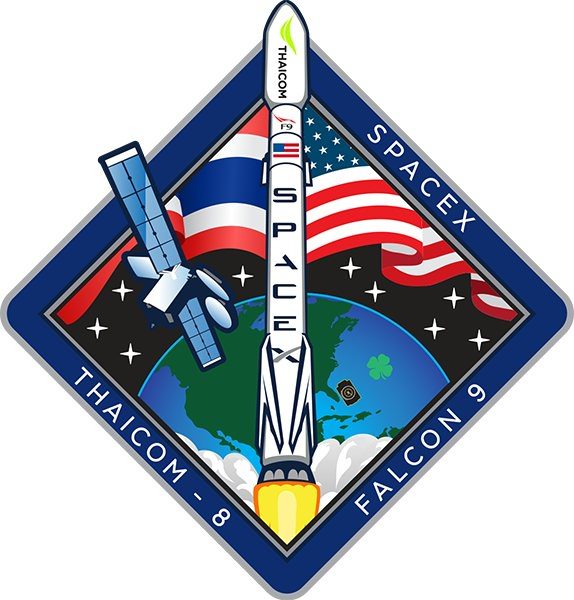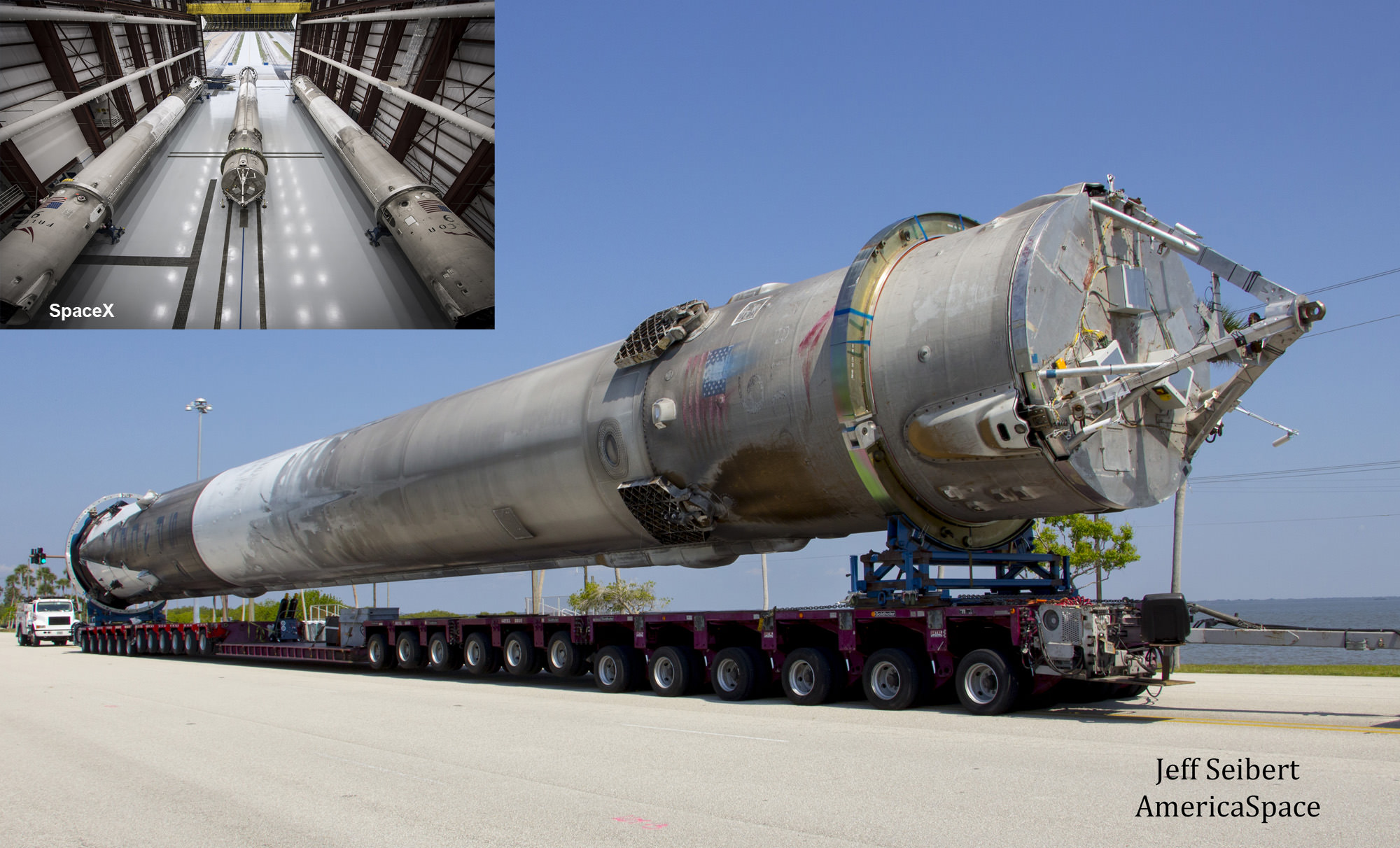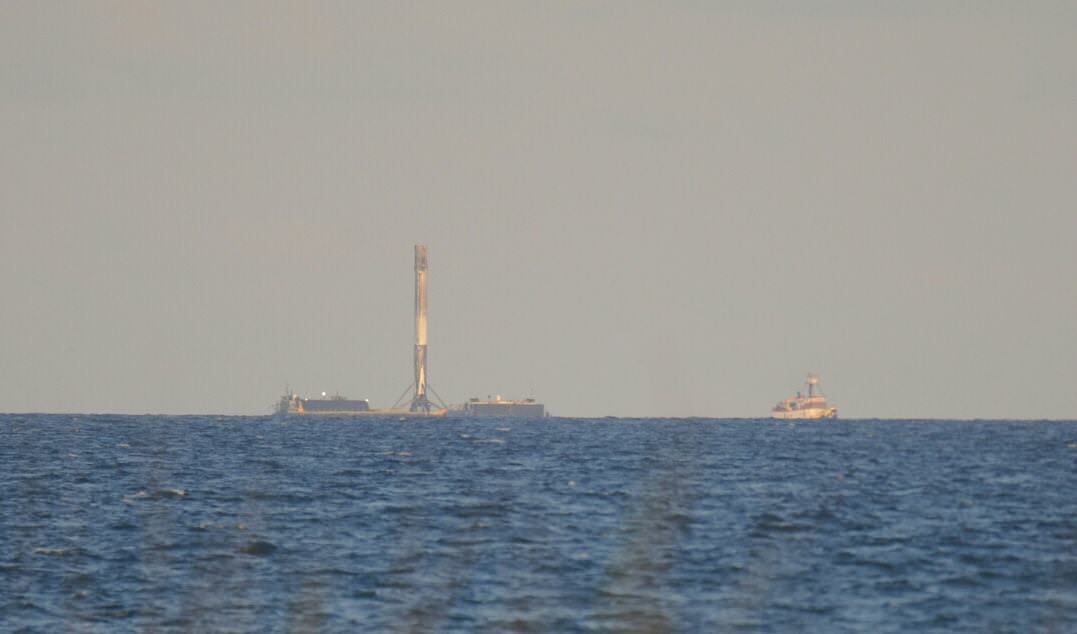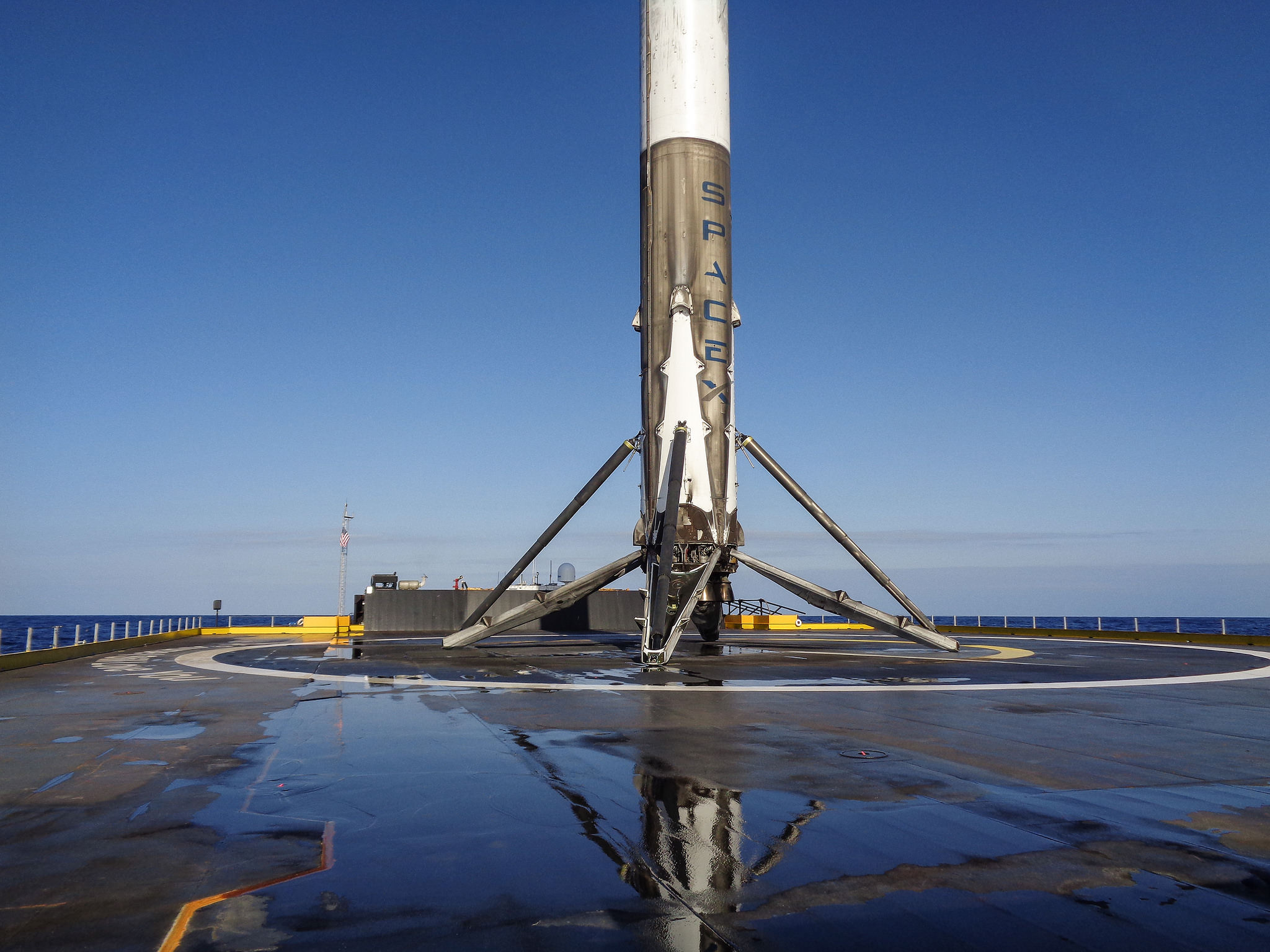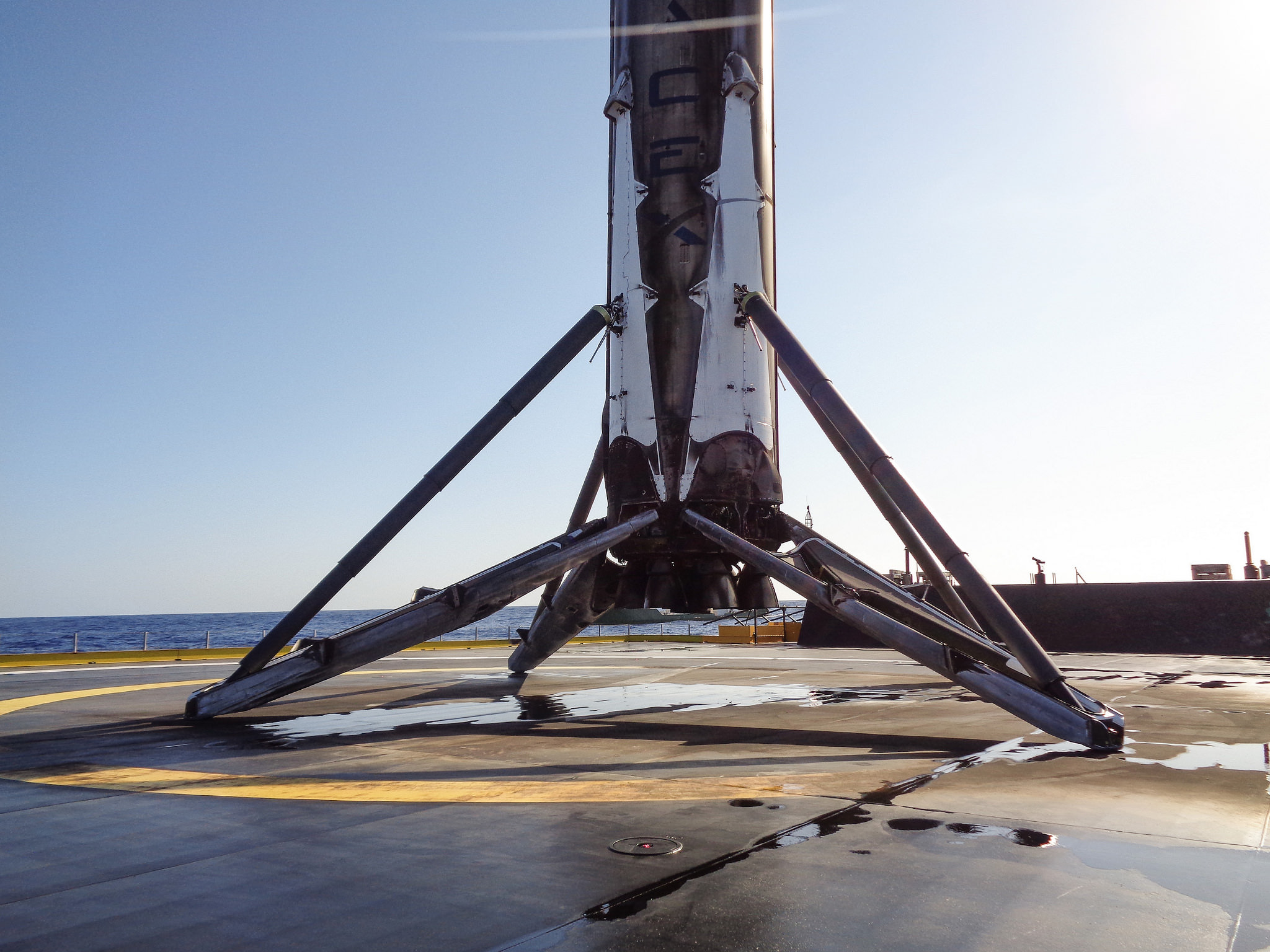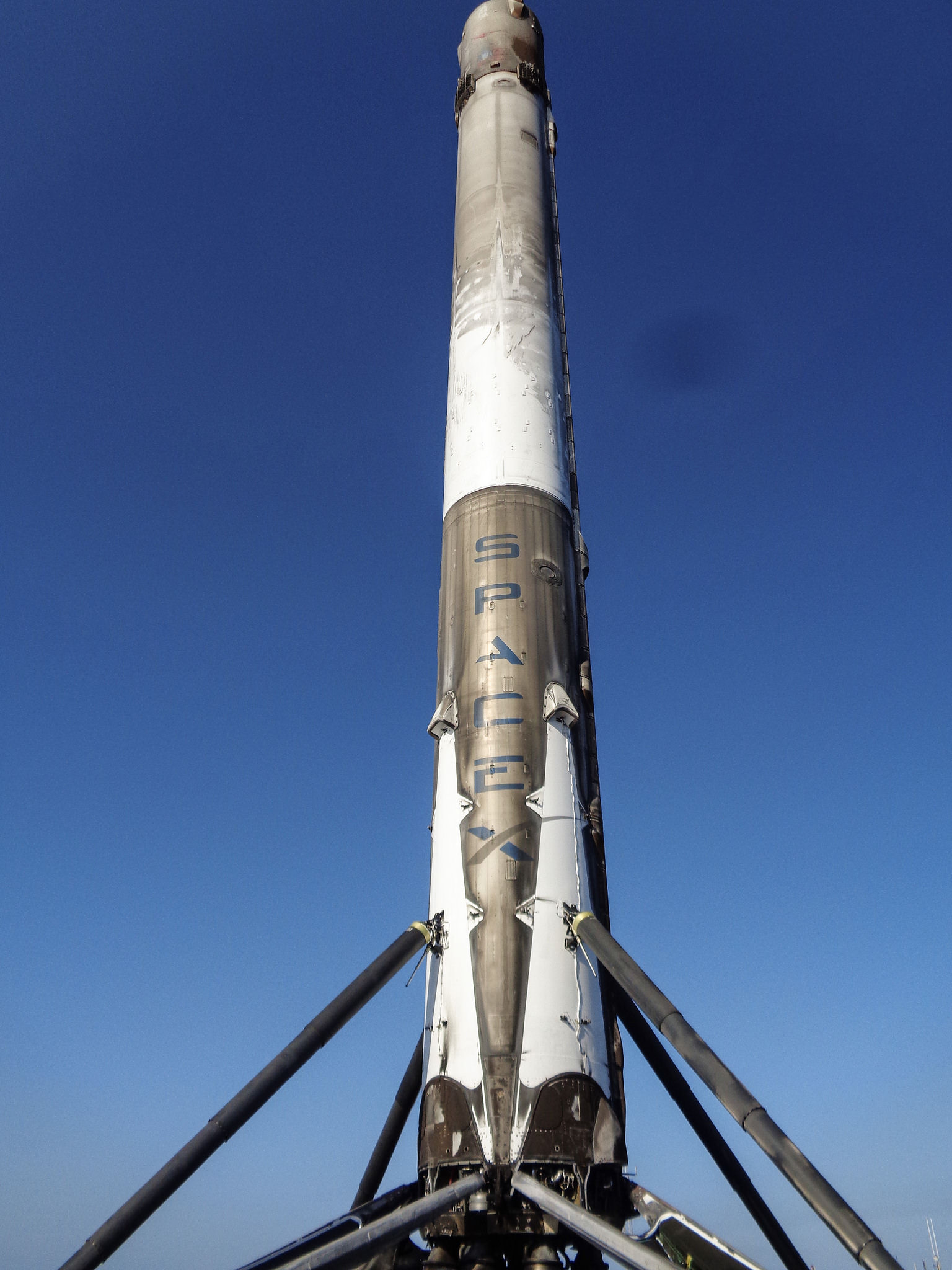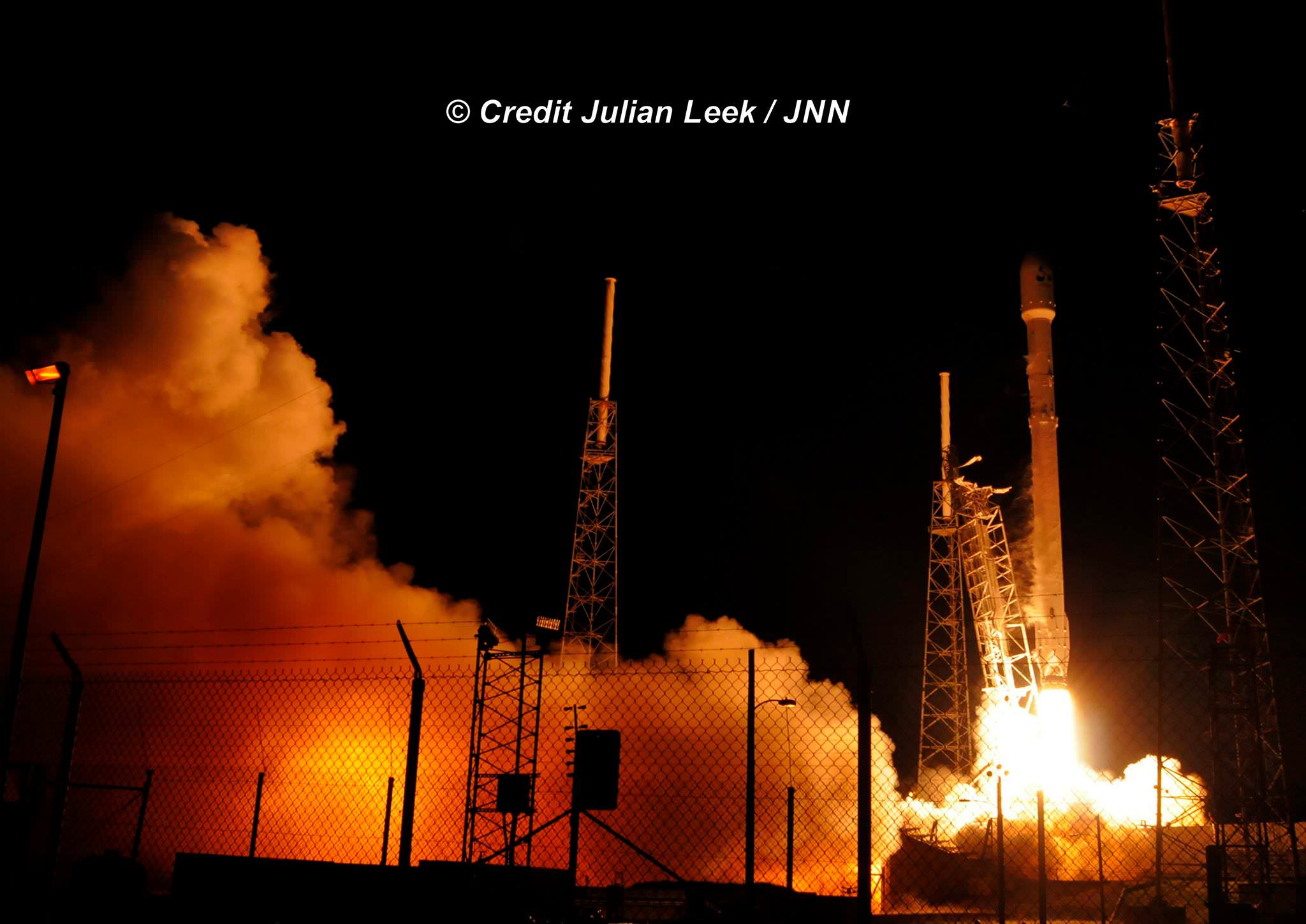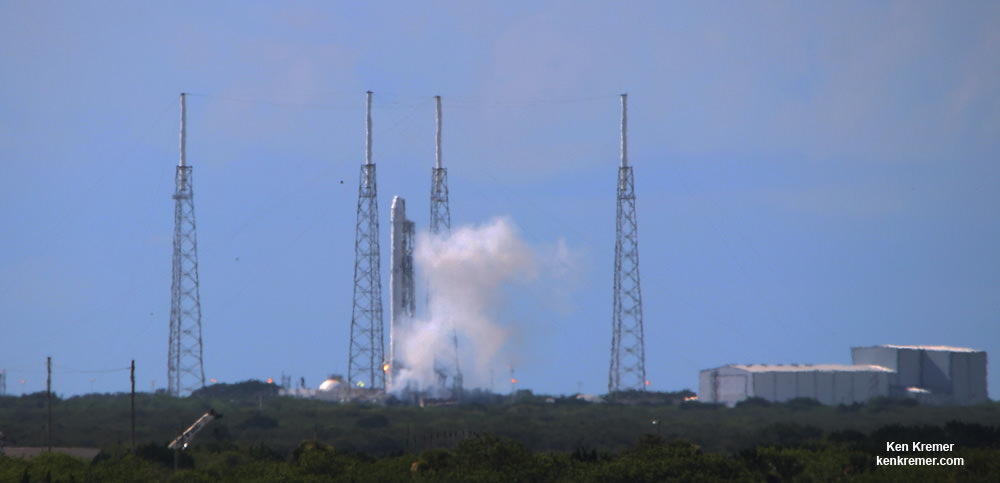
KENNEDY SPACE CENTER, FL – The outlook is outstanding for a dramatic midnight blastoff of the next SpaceX commercial cargo Dragon jam packed with some 5000 pounds of critical payloads and research supplies for NASA and heading to the space station on Monday, July 18 – that also simultaneously features an experimental land landing that promises to rock loudly across the Florida space coast and one day slash launch costs.
Dragon is carrying a crucial crew docking port absolutely essential for conducting future human space missions to the orbiting outpost as well as a host of wide ranging science experiments essential for NASA exploiting the space environment for research in low earth orbit and deep space exploration.
Liftoff of the SpaceX Falcon 9 rocket in its upgraded, full thrust version and the Dragon CRS-9 resupply ship is targeted for 12:45 a.m. EDT Monday, July 18, from Space Launch Complex 40 at Cape Canaveral Air Force Station in Florida.
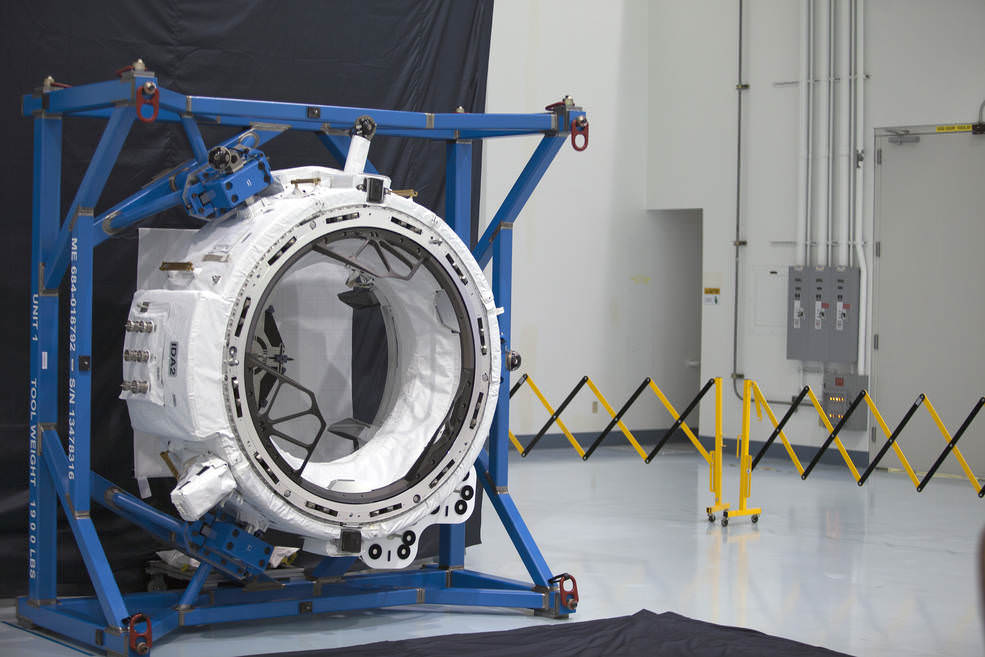
The CRS-9 mission is to support the resident six-person crew of men and women currently working on the station from the US, Russia and Japan.
Spectators are filling local area hotels in anticipation of a spectacular double whammy sky show comprising a thunderous nighttime launch streaking to orbit – followed minutes later by a brilliant rocket flash and night landing back at the Cape of the Falcon first stage that will send sonic booms roaring all around the coast and surrounding inland areas.
SpaceX has confirmed they are attempting the secondary mission of landing the 156 foot tall first stage of the Falcon 9 rocket on land at Cape Canaveral Air Force Station’s Landing Zone 1, located a few miles south of launch pad 40.
The weather and technical outlook for the 229 foot-tall (70 meter) Falcon 9 looks fantastic at this time, a day before liftoff.
The official weather forecast from Air Force meteorologists with the 45th Space Wing calls for a 90 percent chance of “GO” with extremely favorable conditions at launch time for liftoff of this upgraded, SpaceX Falcon 9.
The only concerns are for Cumulus clouds building up and a chance of precipitation.
And for added stargazers delight the night sky features a full moon.
The SpaceX/Dragon CRS-9 launch coverage will be broadcast on NASA TV beginning at 11:30 p.m. EDT Sunday, July 17, with additional commentary on the NASA launch blog.
SpaceX will also feature their own live webcast beginning approximately 20 minutes before launch at 12:25 a.m. EDT Monday, July 18
You can watch the launch live at NASA TV at – http://www.nasa.gov/nasatv
You can watch the launch live at SpaceX Webcast at – spacex.com/webcast
The launch window is instantaneous, meaning that any delays due to weather or technical issues will results in a minimum 2 day postponement.
If the launch does not occur Monday, a backup launch opportunity exists on 12 a.m. Wednesday, July 20, just seconds after midnight, with NASA TV coverage starting at 10:45 p.m. EDT Tuesday, July 19.
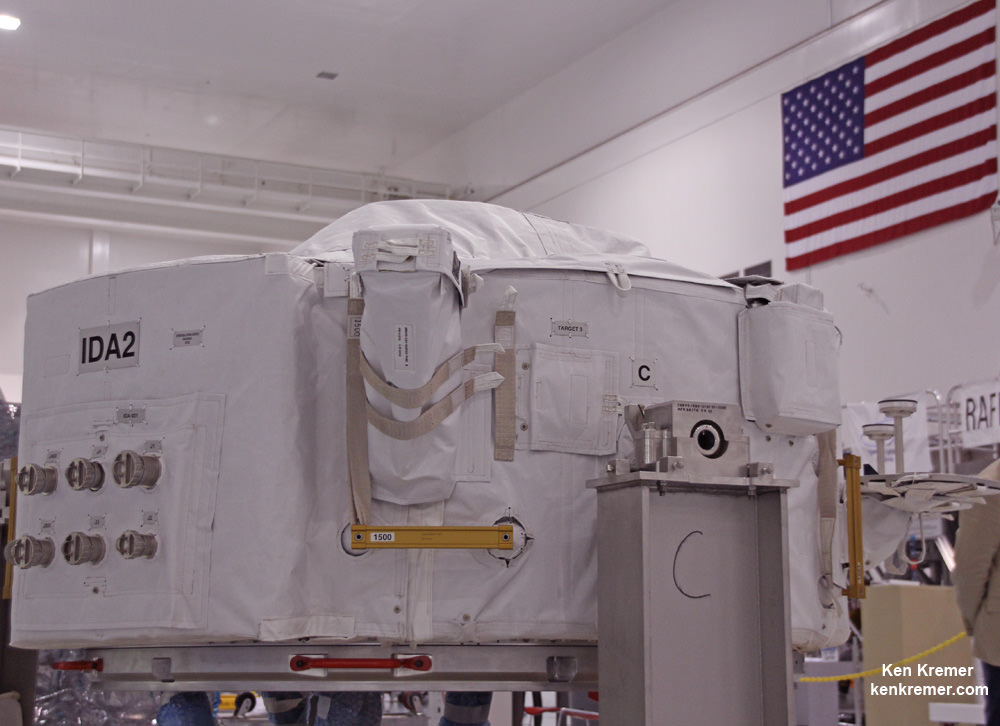
CRS-9 marks only the second time SpaceX has attempted a land landing of the 15 story tall first stage booster.
The history making first time took place at Landing Zone 1 (LZ 1) on Dec. 22, 2015 as part of the ORBCOMM-2 mission. Landing Zone 1 is built on the former site of Space Launch Complex 13, a U.S. Air Force rocket and missile testing range.
SpaceX also successfully recovered first stages three times in a row at sea this year on an ocean going drone ship barge using the company’s OCISLY Autonomous Spaceport Drone Ship (ASDS) on April 8, May 6 and May 27.
SpaceX issued a statement describing how local area residents could hear sonic booms – similar to those heard during landings of NASA’s space shuttles.
“There is the possibility that residents of northern and central Brevard County, Fla. may hear one or more sonic booms during landing. A sonic boom is a brief thunder-like noise a person on the ground hears when an aircraft or other vehicle flies overhead faster than the speed of sound,” said SpaceX.
Who could be affected?
“Residents of the communities of Cape Canaveral, Cocoa, Cocoa Beach, Courtenay, Merritt Island, Mims, Port Canaveral, Port St. John, Rockledge, Scottsmoor, Sharpes, and Titusville in Brevard County, Fla. are most likely to hear a sonic boom, although what residents experience will depend on weather conditions and other factors.”
The sights and sound are certain to be thrilling- so catch it if you can!
CRS-9 counts as the company’s ninth scheduled flight to deliver supplies, science experiments and technology demonstrations to the International Space Station (ISS).
The CRS-9 mission is for the crews of Expeditions 48 and 49 to support dozens of the approximately 250 science and research investigations in progress under NASA’s Commercial Resupply Services (CRS) contract.
SpaceX engineers conducted their standard static fire hold down test of the first stages Merlin 1D engines with the rocket erect at pad 40, this morning Saturday, July 16.
The customary test lasts a few seconds and was conducted with the Dragon bolted on top at about 9:30 a.m. I saw the test while visiting atop neighboring Launch Complex 39B at the Kennedy Space Center – see photo.
“All looks good,” reported Hans Koenigsmann, SpaceX vice president of Flight Reliability, at a media briefing this afternoon.
“We expect a GO for launch.”
Dragon will reach its preliminary orbit about 10 minutes after launch. Then it will deploy its solar arrays and begin a carefully choreographed series of thruster firings to reach the space station.
If all goes well, Dragon will arrive at the orbiting outpost on Wednesday, July 20, after a 2 day orbital chase.
NASA astronaut Jeff Williams will then reach out with the station’s 57.7-foot-long Canadian-built robotic arm to grapple and capture the private Dragon cargo ship working from a robotics work station in the station’s cupola. NASA astronaut Kate Rubins will serve as Williams backup. She just arrived at the station last week on July 9 for a minimum 4 month stay, after launching to orbit on a Russian Soyuz on July 6 with two additional crew mates.
Ground commands will be sent from Houston to the station’s arm to install Dragon on the Earth-facing bottom side of the Harmony module for its stay at the space station. The crew expects to open the hatch a day later after pressurizing the vestibule in the forward bulkhead between the station and Dragon.
Live coverage of the rendezvous and capture July 20 will begin at 5:30 a.m. on NASA TV, with installation coverage set to begin at 9:45 a.m.
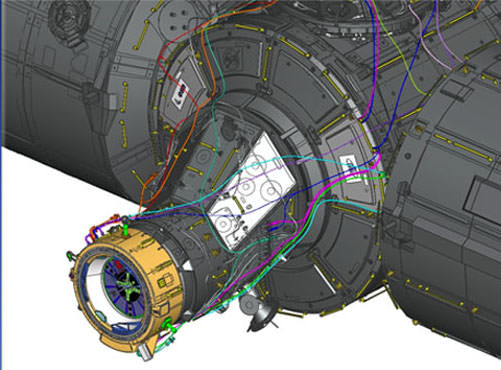
Credits: NASA
Perhaps the most critical payload relating to the future of humans in space is the 1,020-pound international docking adapter known as IDA-2 or International Docking Adapter-2.
Here’s an early morning video view of Falcon 9 on the pad today.
Video Caption: Early morning shots of CRS-9 ready for flight on Monday July 18 at 12:45 AM. Credit: USLaunchReport
Watch for Ken’s onsite CRS-9 mission reports direct from the Kennedy Space Center and Cape Canaveral Air Force Station, Florida.
Stay tuned here for Ken’s continuing Earth and Planetary science and human spaceflight news.
………….
Learn more about Juno at Jupiter, SpaceX CRS-9 rocket launch, ISS, ULA Atlas and Delta rockets, Orbital ATK Cygnus, Boeing, Space Taxis, Mars rovers, Orion, SLS, Antares, NASA missions and more at Ken’s upcoming outreach events:
July 15-18: “SpaceX launches to ISS on CRS-9, Juno at Jupiter, ULA Delta 4 Heavy spy satellite, SLS, Orion, Commercial crew, Curiosity explores Mars, Pluto and more,” Kennedy Space Center Quality Inn, Titusville, FL, evenings
